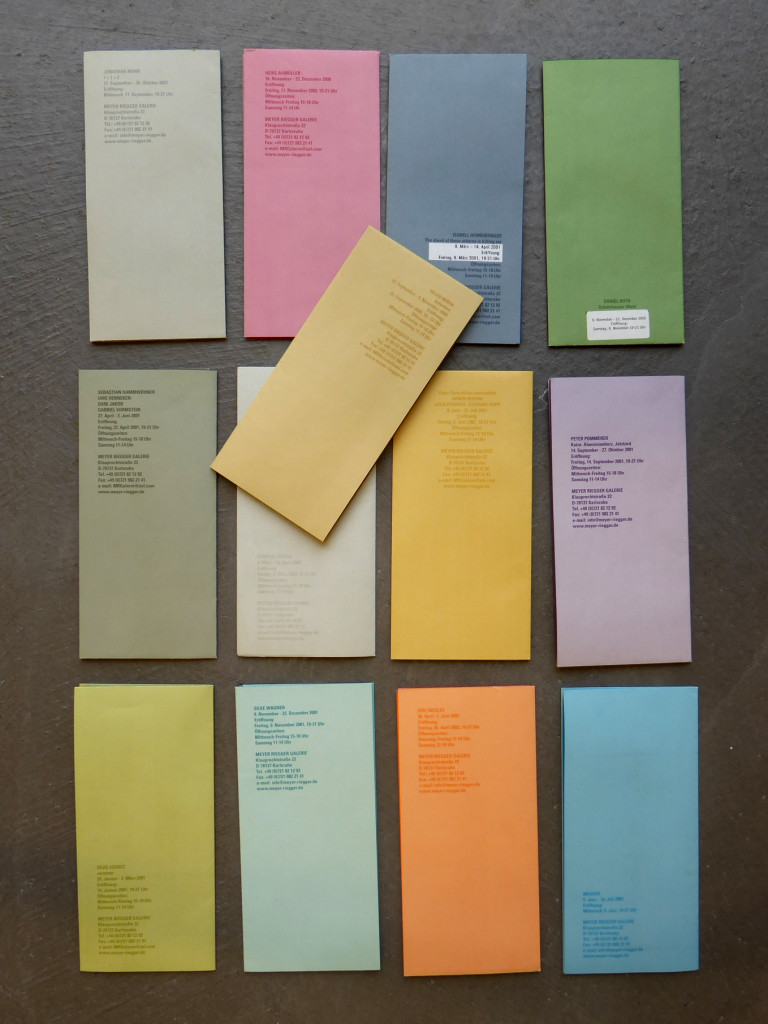
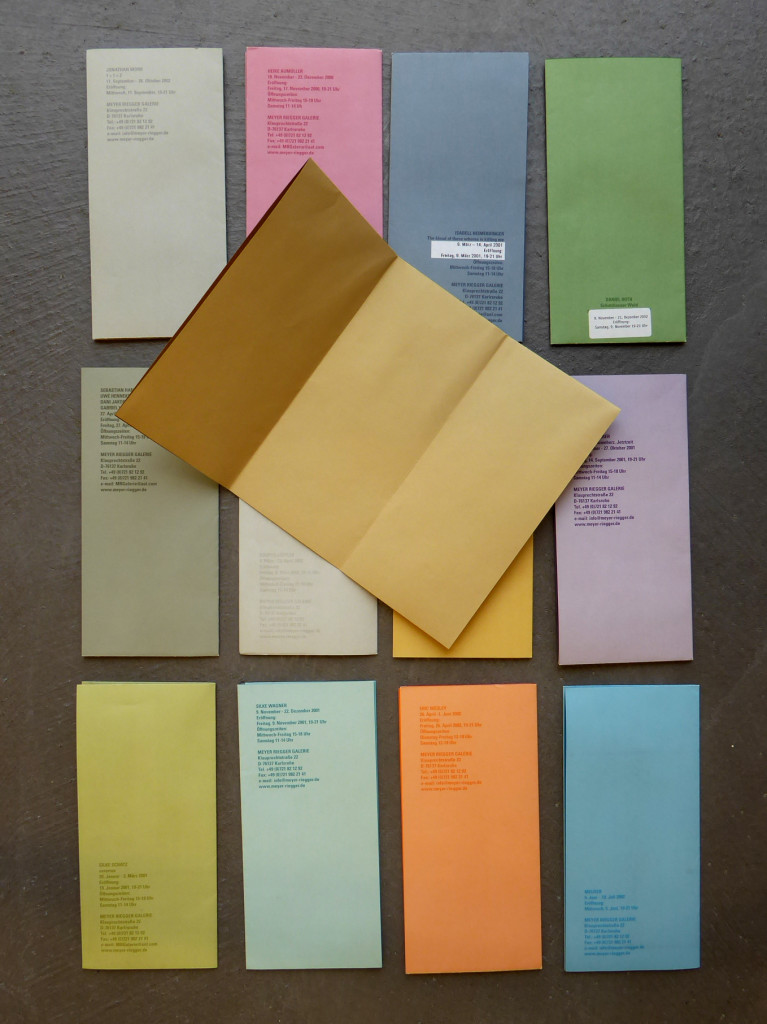
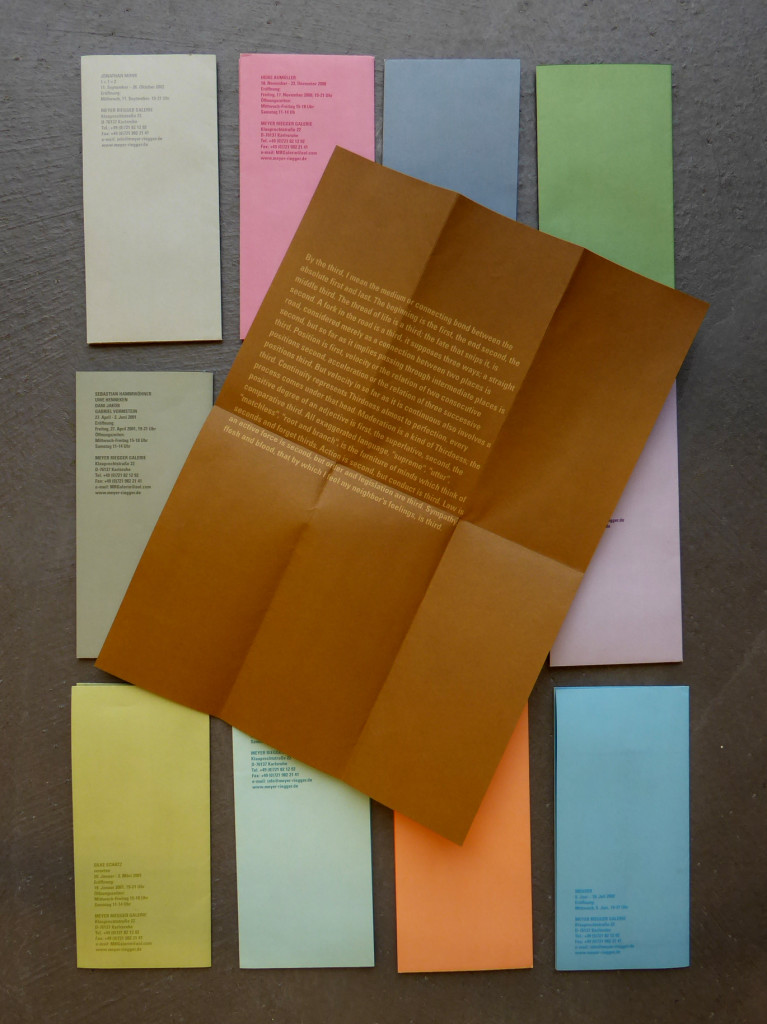
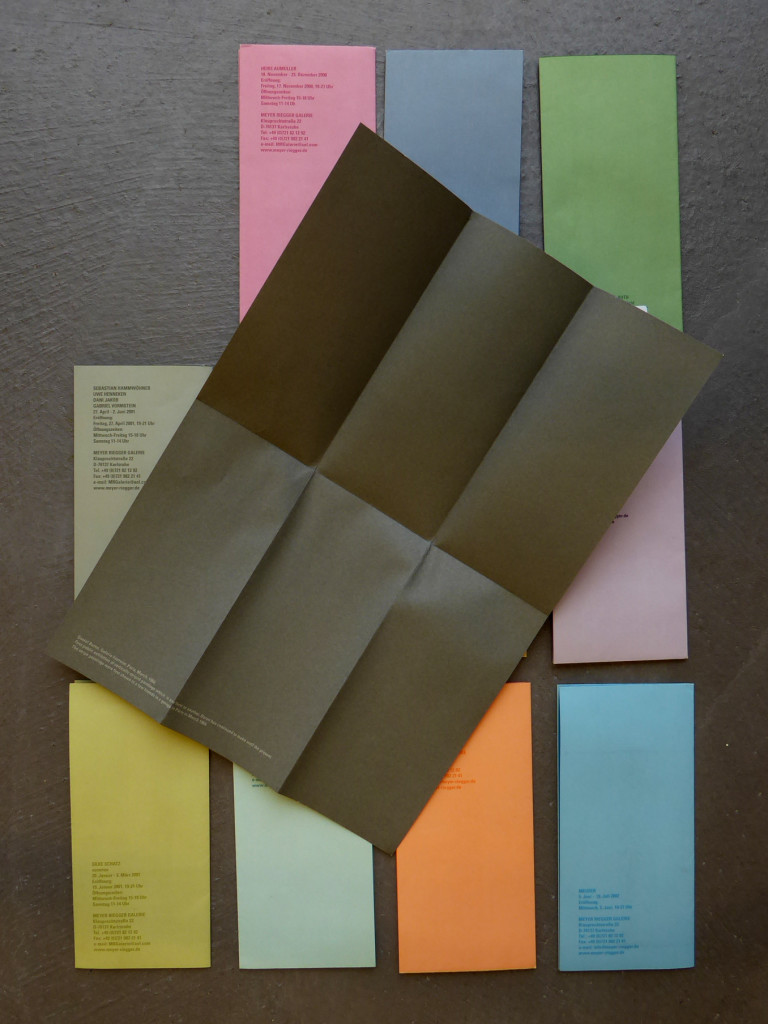
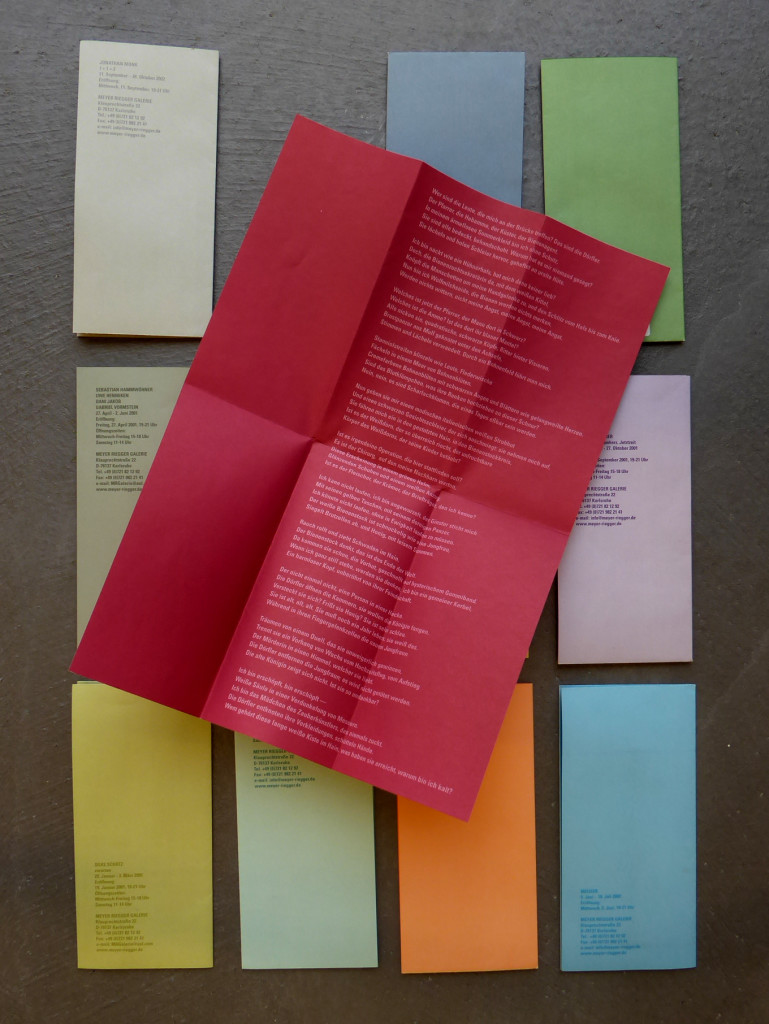
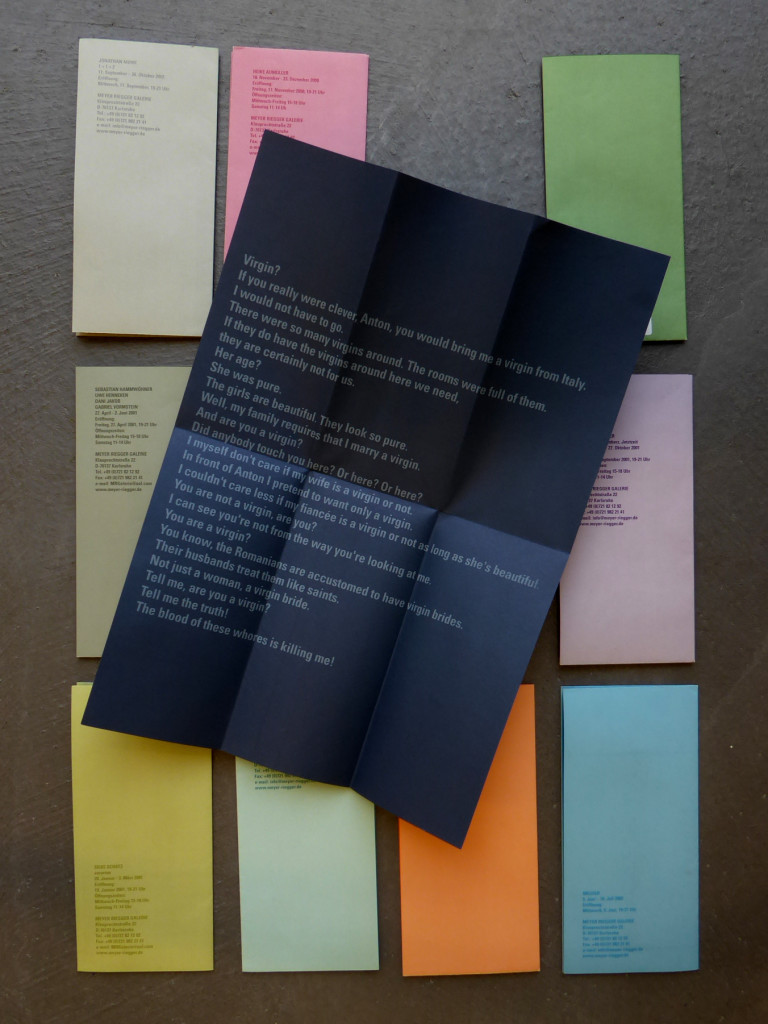
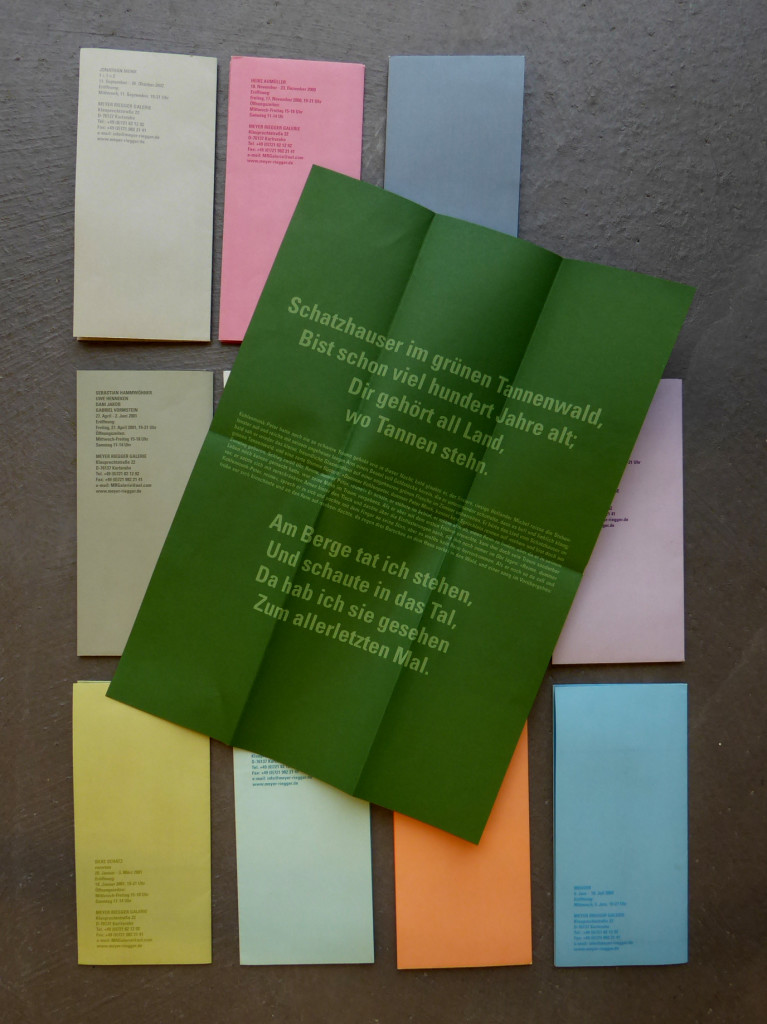
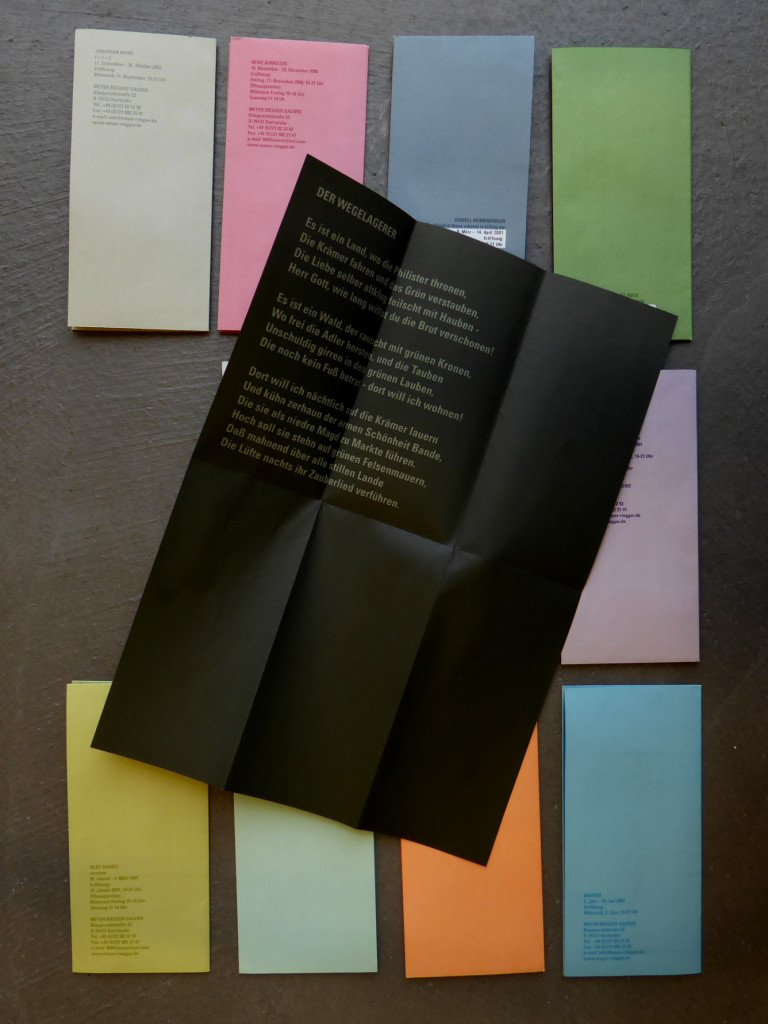
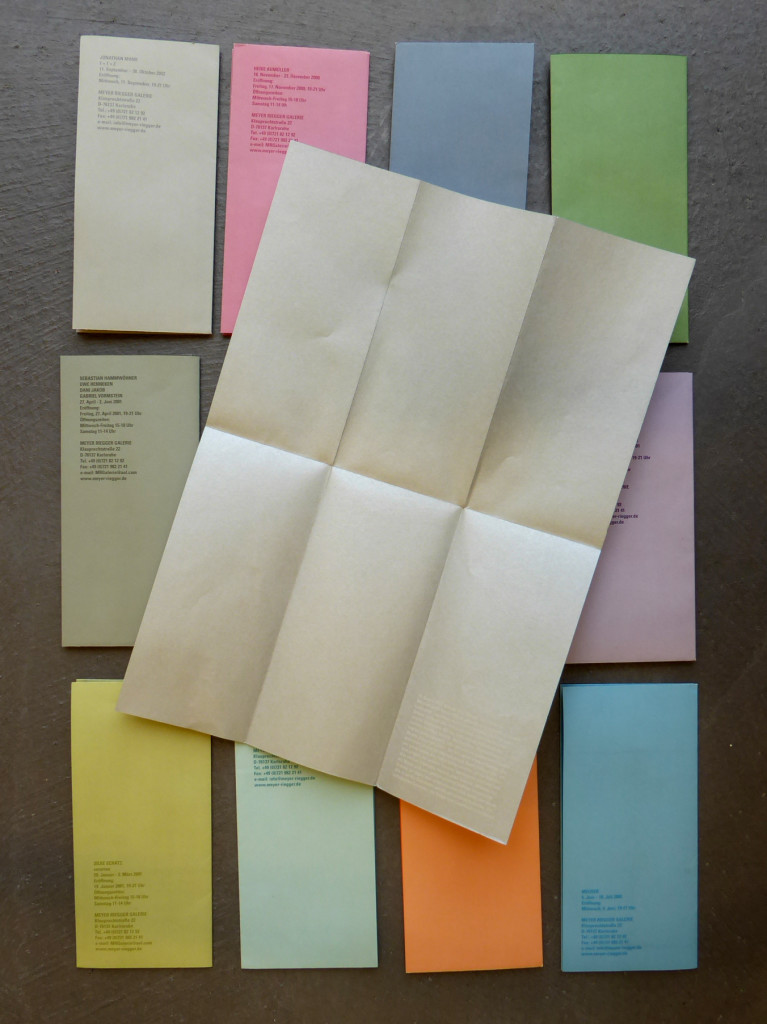
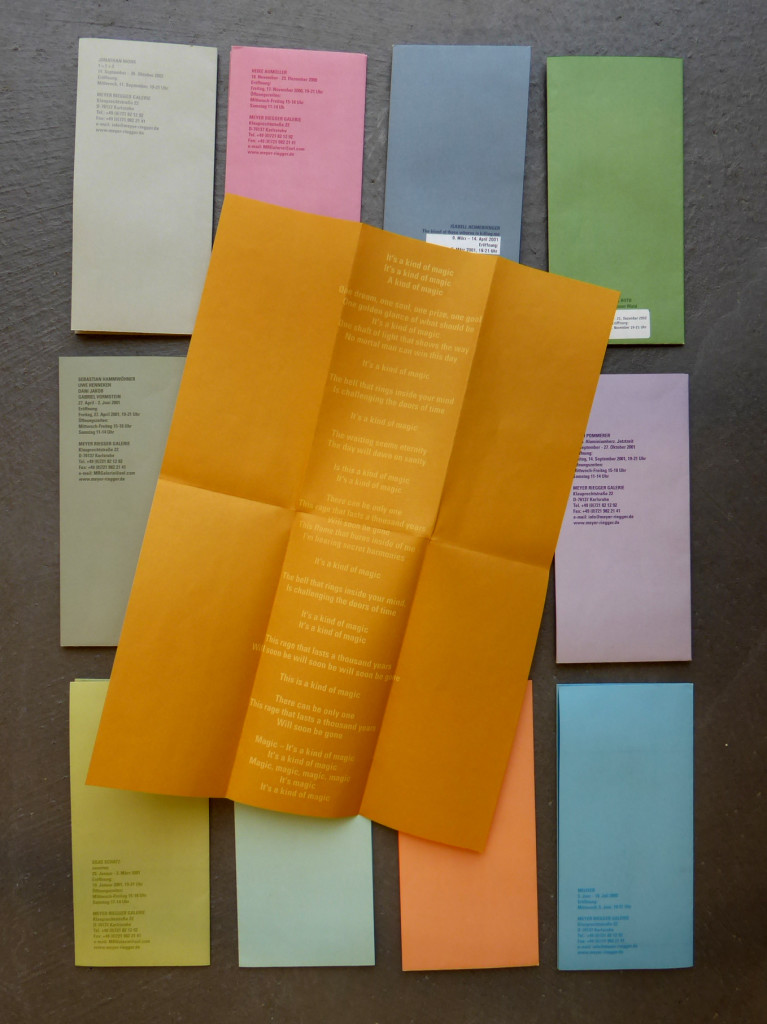
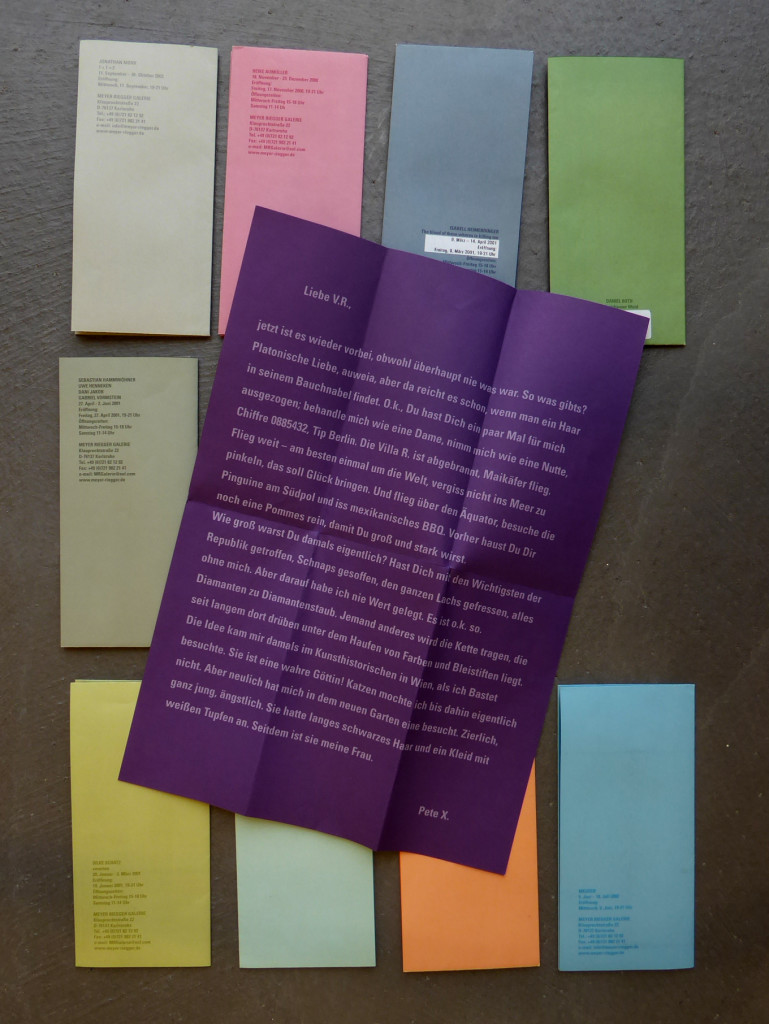
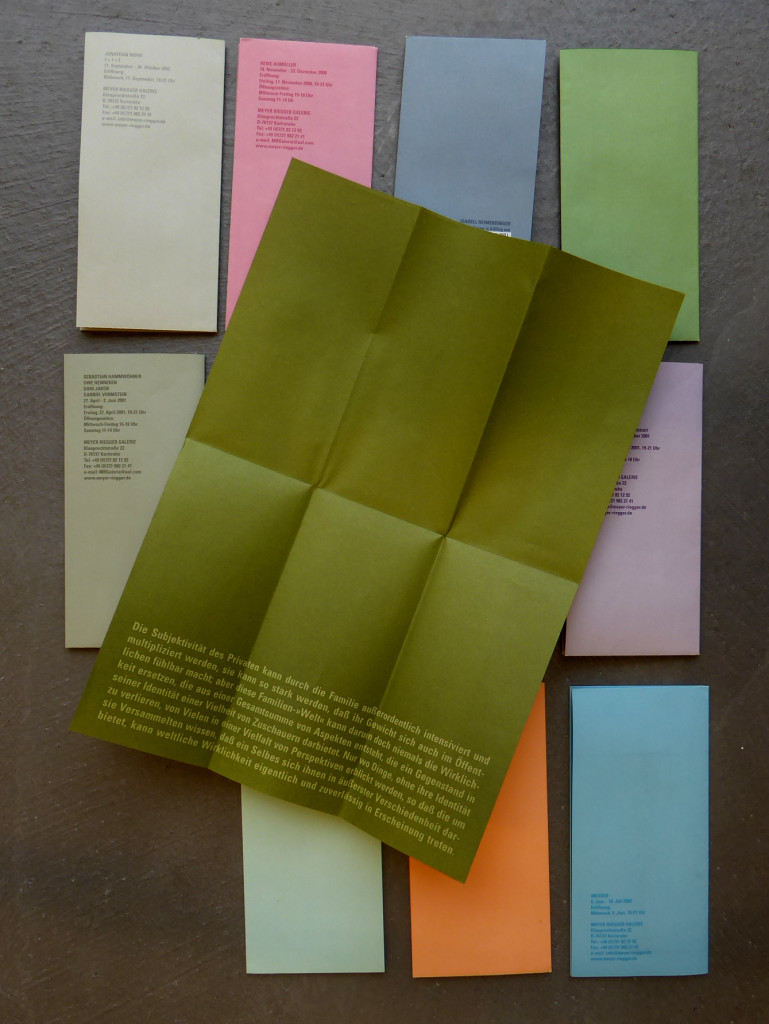
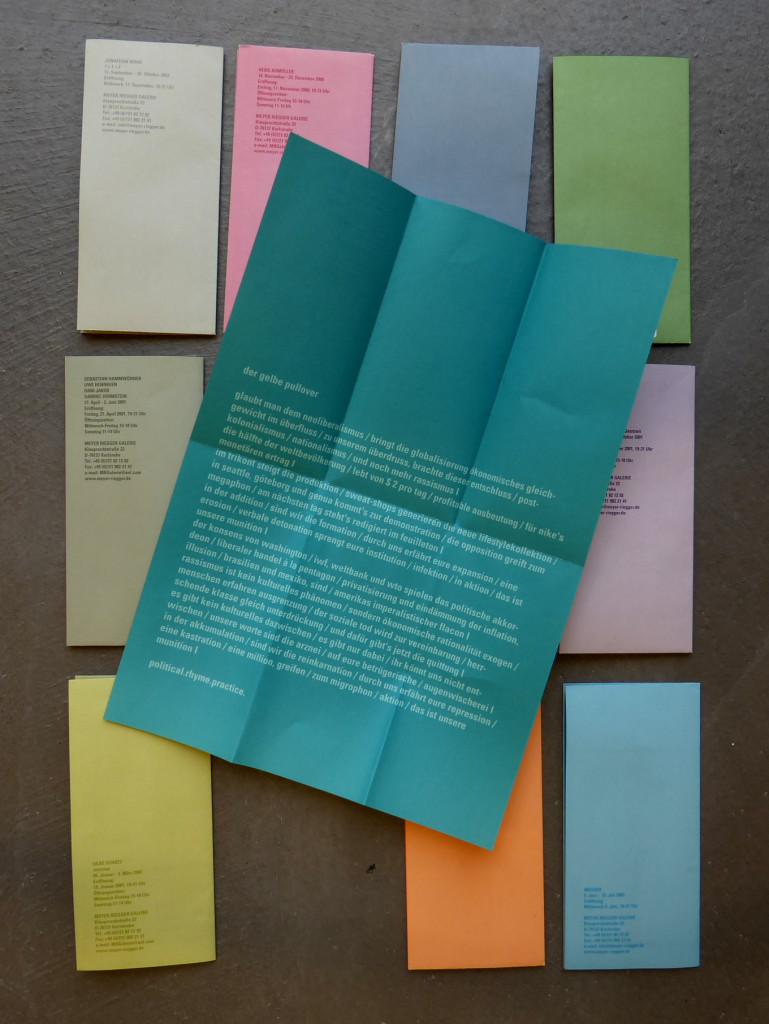
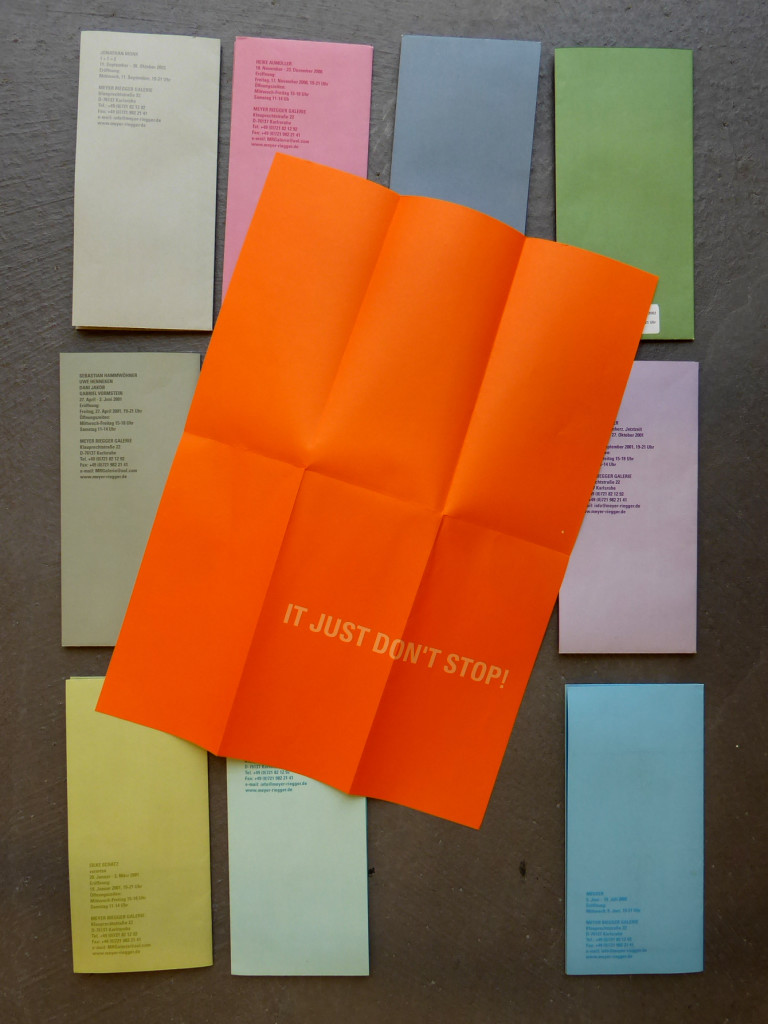
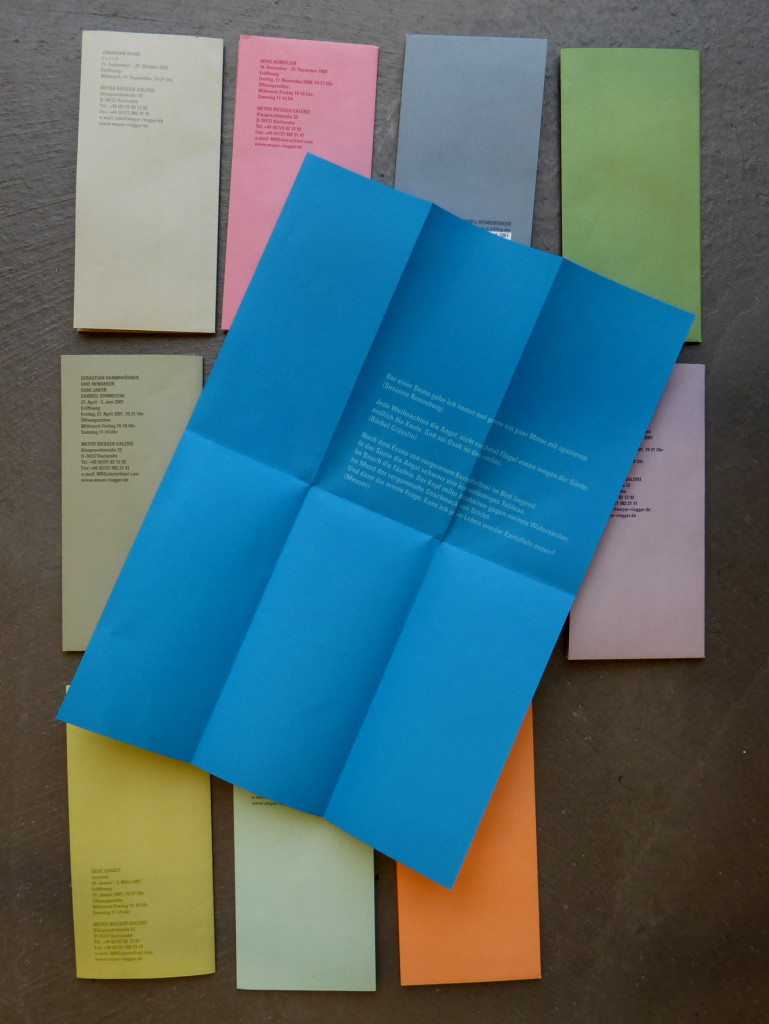
A series of folded invitations cards/posters by Meyer Riegger Galerie (est. 1997 in Karlsruhe, since 2008 also in Berlin). The exhibiting artist would choose the text for the inside, a quote, a poem, a short text. As many of the new young galleries established in the mid to late nineties, Meyer Riegger Galerie used their invitation cards to highlight individuality and as an innovative form of (self-)branding. Invitation cards could become an art project, and a space where art may happen – and is distributed worldwide for free. A similar strategy was adopted by other young up-and-coming galleries such as neugerriemschneider, Berlin (est. 1994), Gavin Brown’s Enterprise, New York (1994-2020), CFA Contemporary Fine Arts, Berlin (est. 1992), The Modern Institute, Glasgow (est. 1997), or Eva Presenhuber (Galerie Walcheturm 1989-1998/Galerie Eva Presenhuber).
Mark Leckey
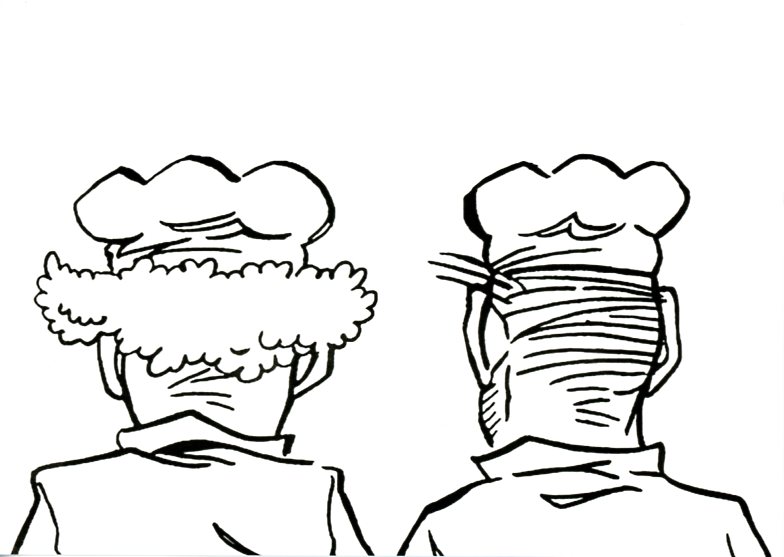

In 2006 The Drunken Bakers were the subject of a film by Mark Leckey (to be watched). Leckey created a film using frames from the original strips to construct a narrative and added a soundtrack spoken by himself and his colleague Steve Claydon in Liverpudlian accents. According to Emily Mears,
By fading the screen to black between episodes, Leckey constructs an elliptical narrative that mirrors the sense of time lost by the drinkers and the viewer. The video plays in a white box with a white carpet; a clock projected onto the outside of the box tells a stuck time, the hour hand slipping back to three each time it manages to reach four.
In Roberta Smith’s words, Leckey constructs “dreamy, druggy, disjointed variants on music videos…He has ingeniously filmed the comic strip with close-ups and jump-cuts, creating a kind of stop-action animation, and added a skillfully explicit soundtrack replete with convincing belches, slurps, breaking glass and vomiting.” Smith says that Leckey’s artwork is less an original work than an “adaptation or an homage” of the original cartoon. (as reported by Cabinet’s website)
Comment by a user Thomas Schlup: “‘Betrunkene Bäcker’ nannte sie Mark Leckey; mich erinnern sie aber an die beiden Jungs bei Busch, einfach ein wenig in die Jahre gekommen. Das waren vielleicht nur Doubles, die gemahlen wurden, und die Originale sitzen hier auf dem Bänklein vor dem Haus und erzählen dem Wilhelm ihre Missetaten aus der Jugend. Drei-Gupf-Hüte. Keck.”
THE ADVERTISMENTS OF GALERIE BRUNO BISCHOFBERGER IN ARTFORUM AND KUNSTBULLETIN
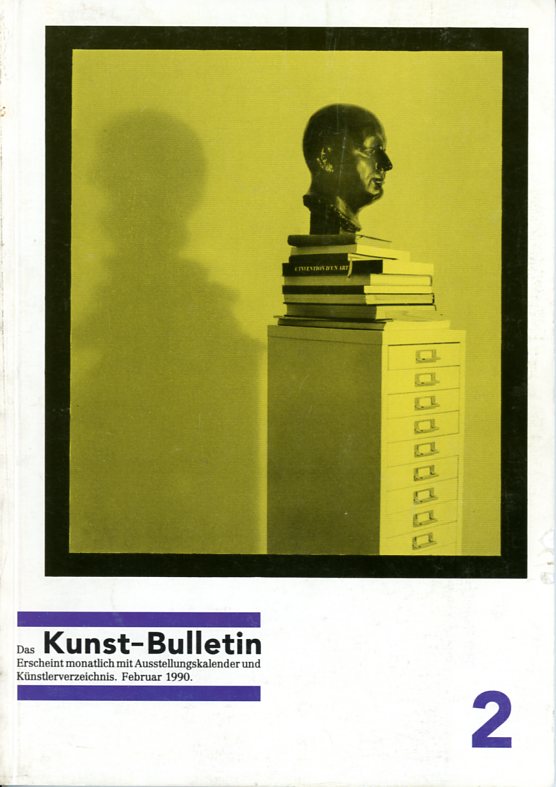
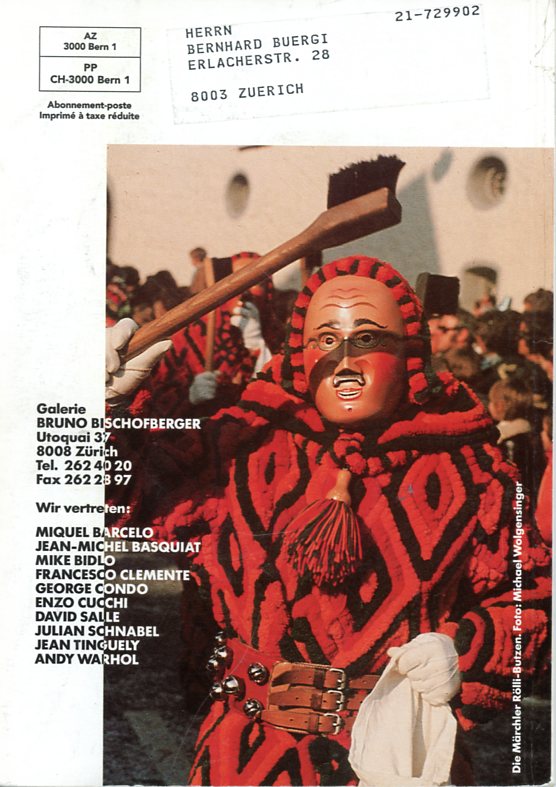
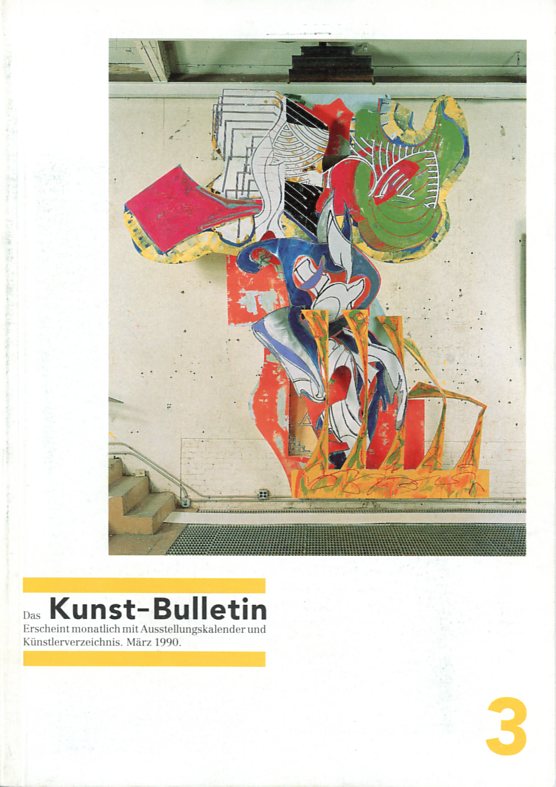
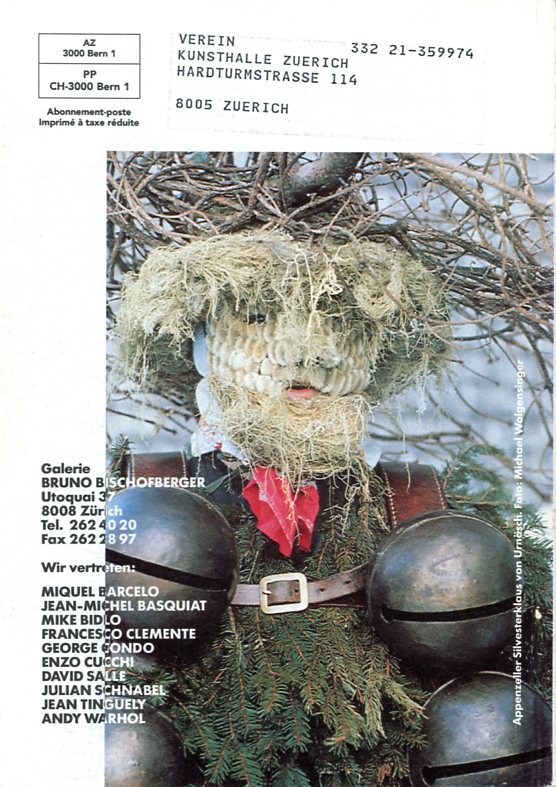
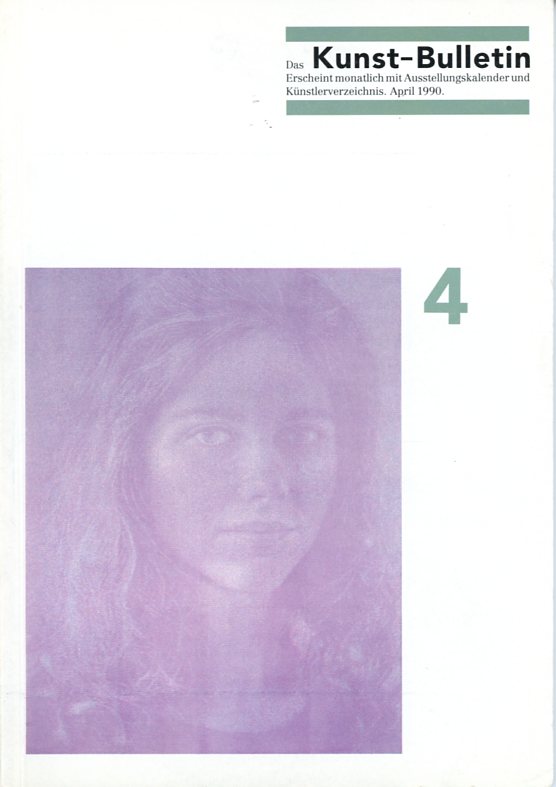
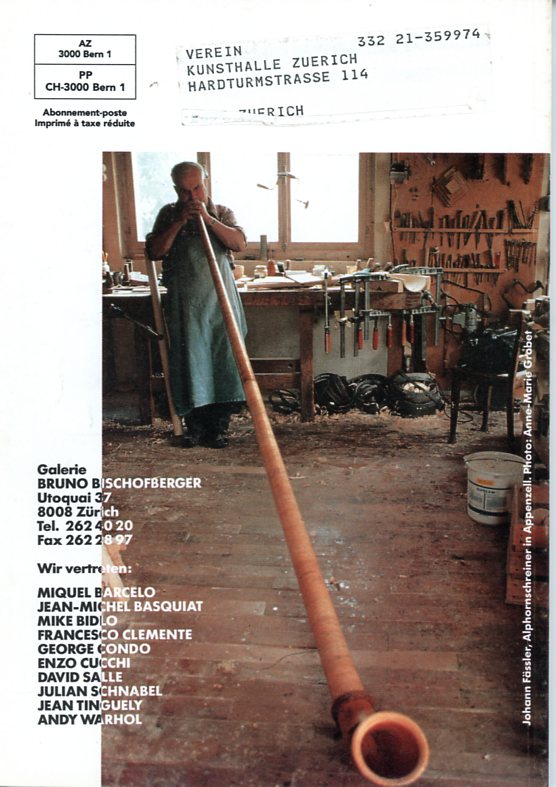
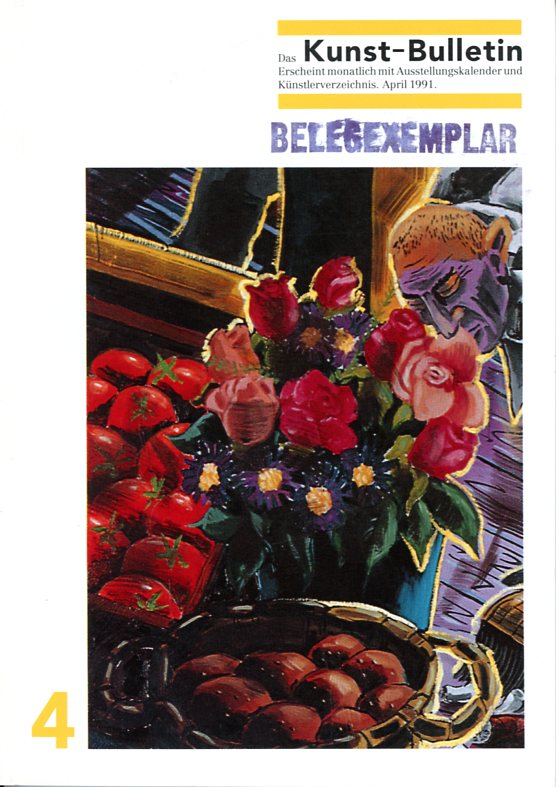
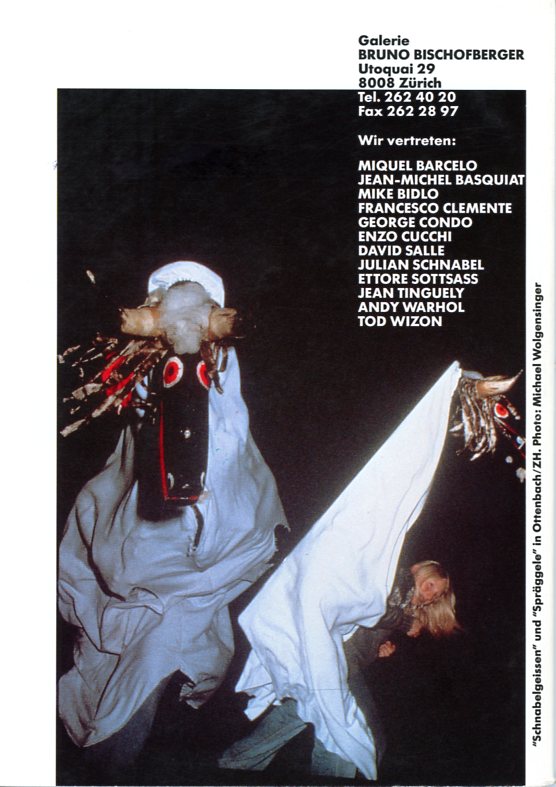
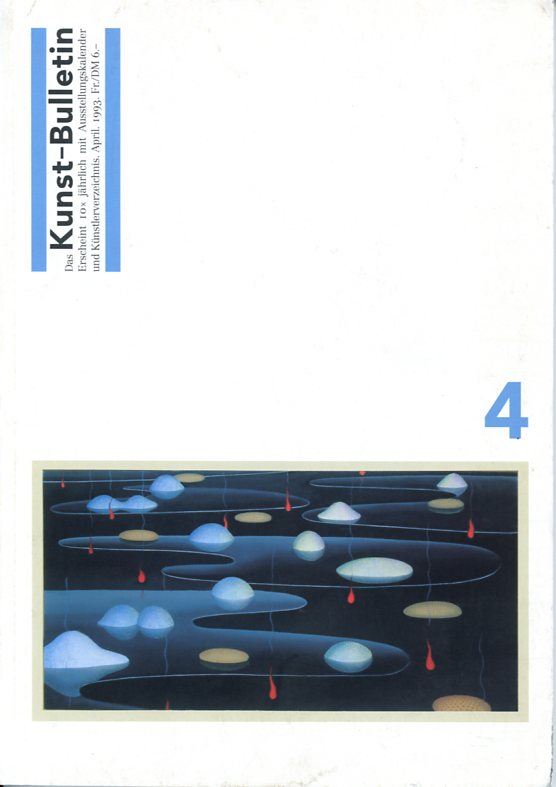
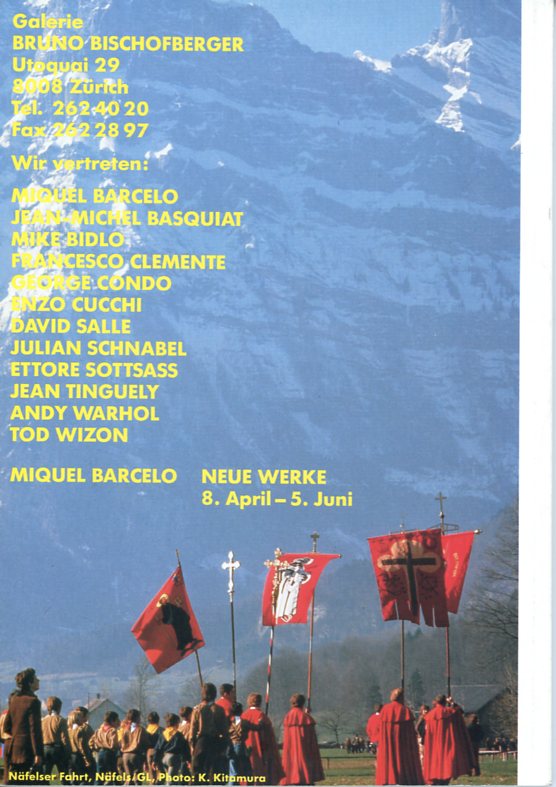
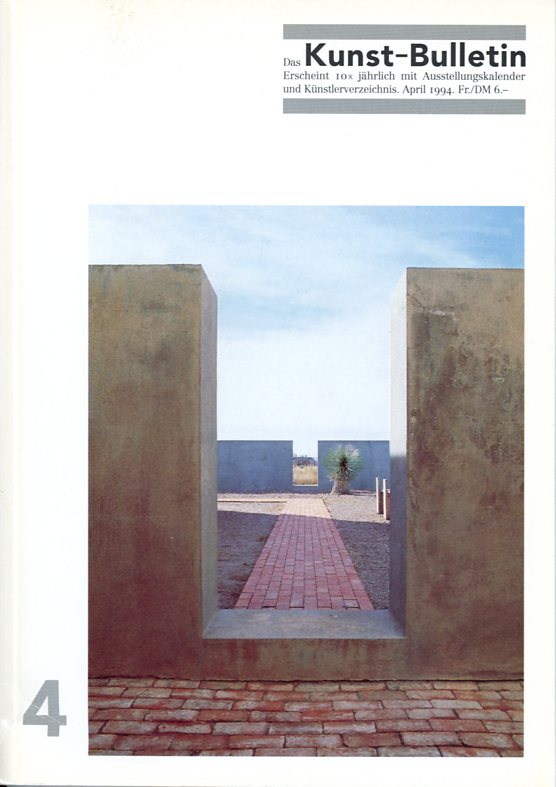
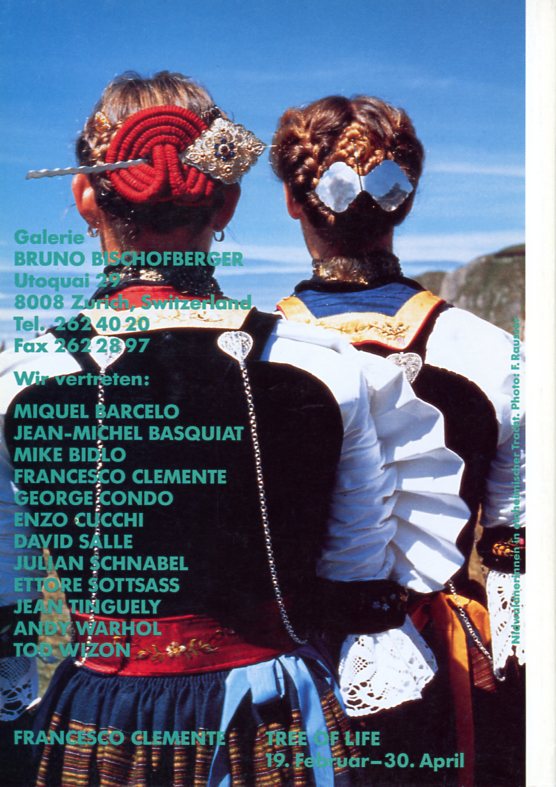
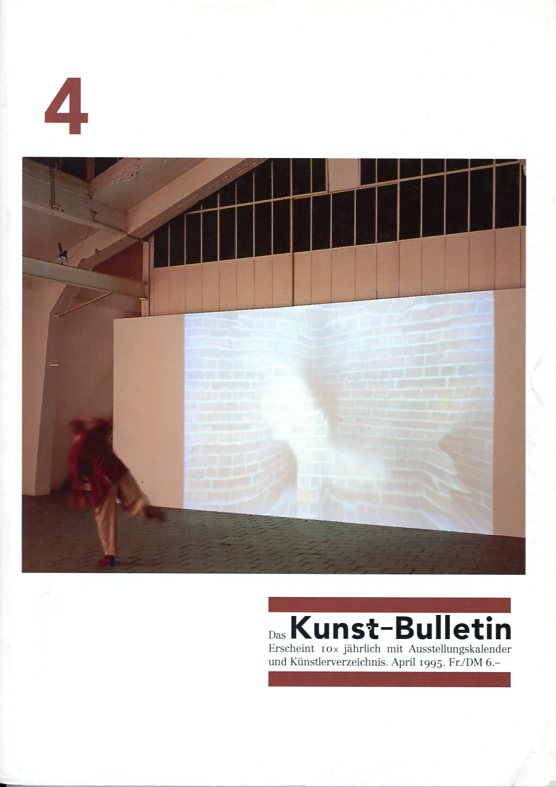

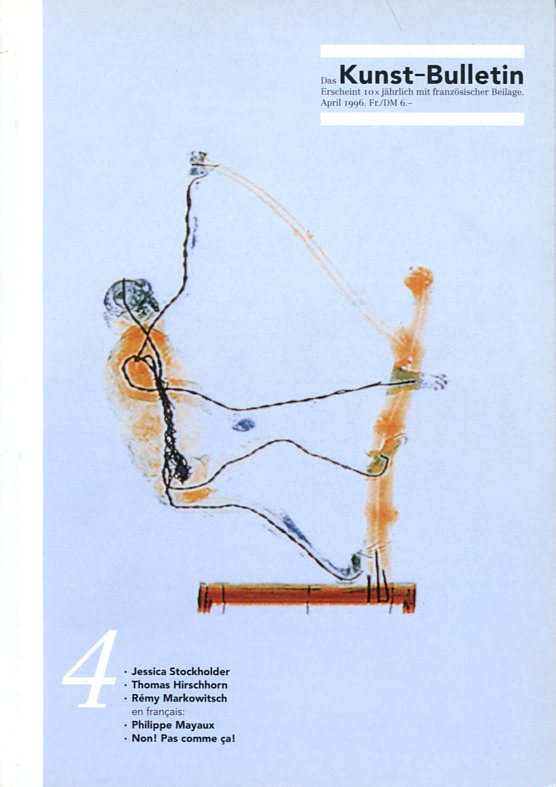
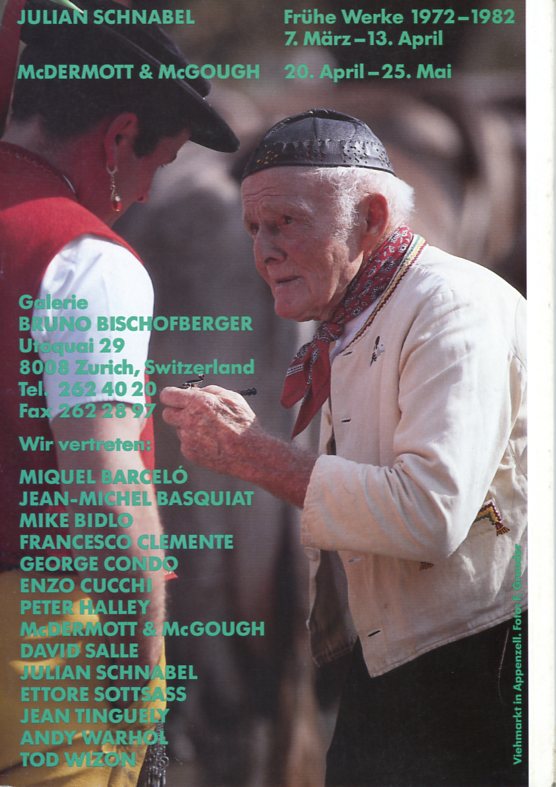
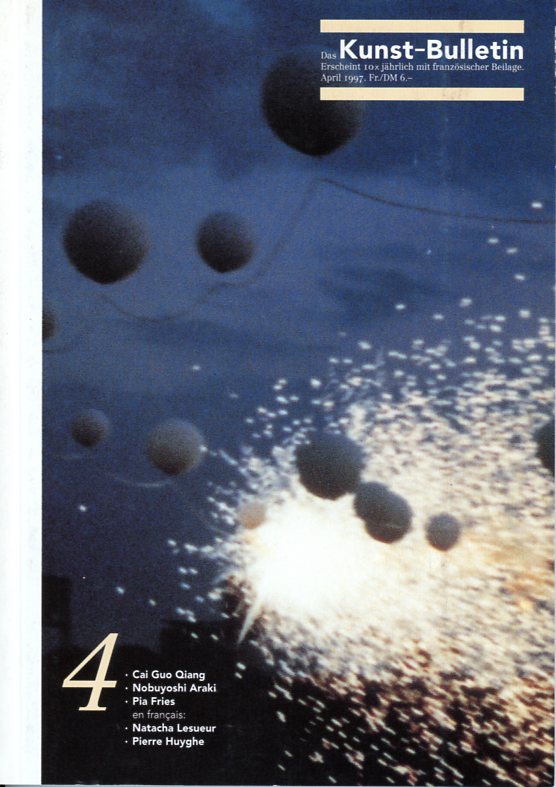
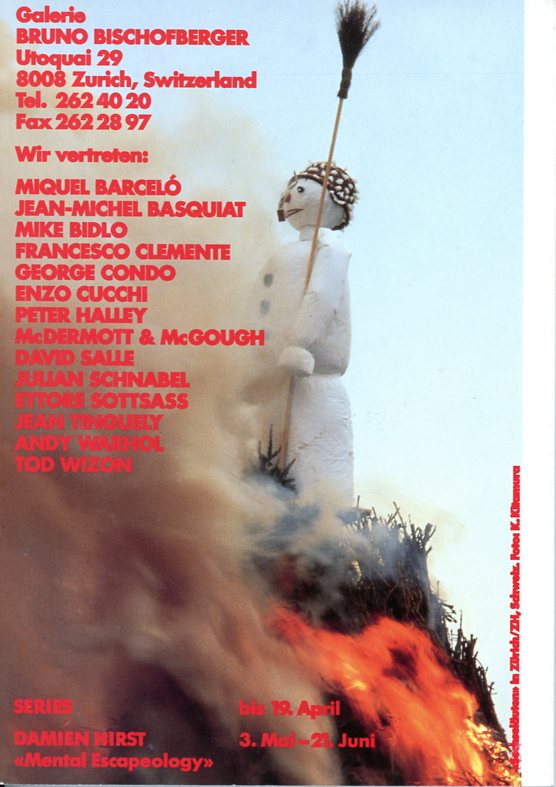
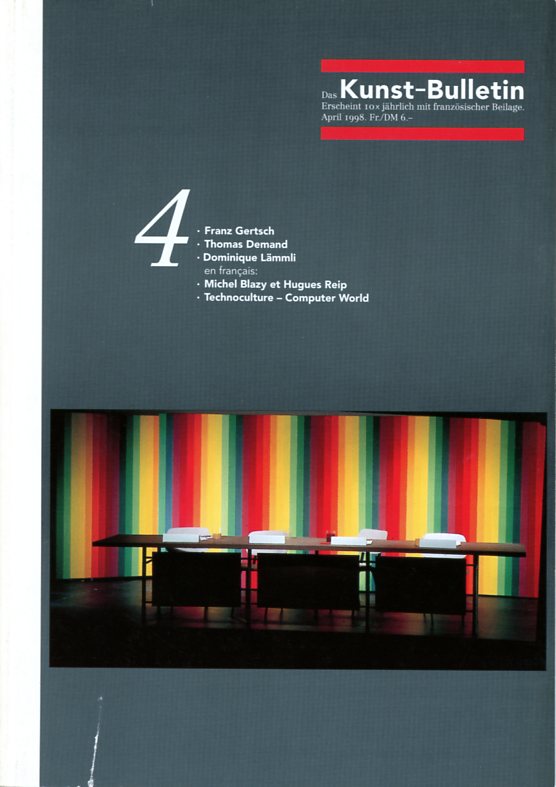
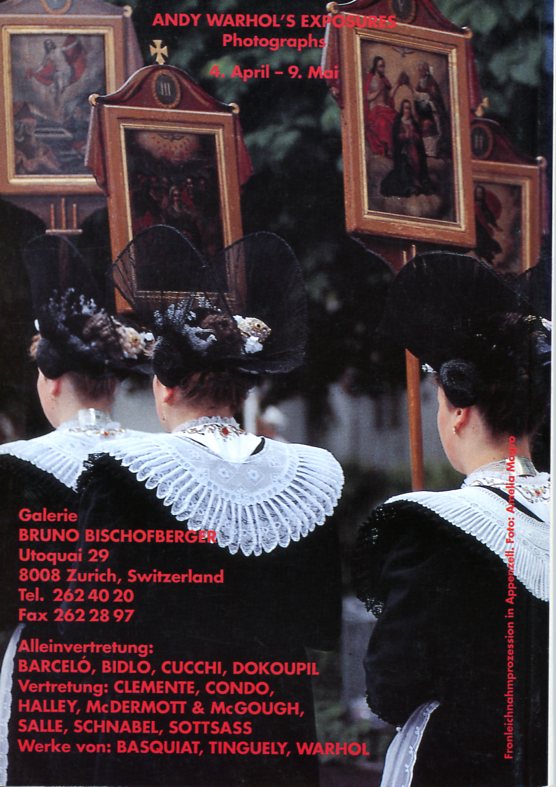
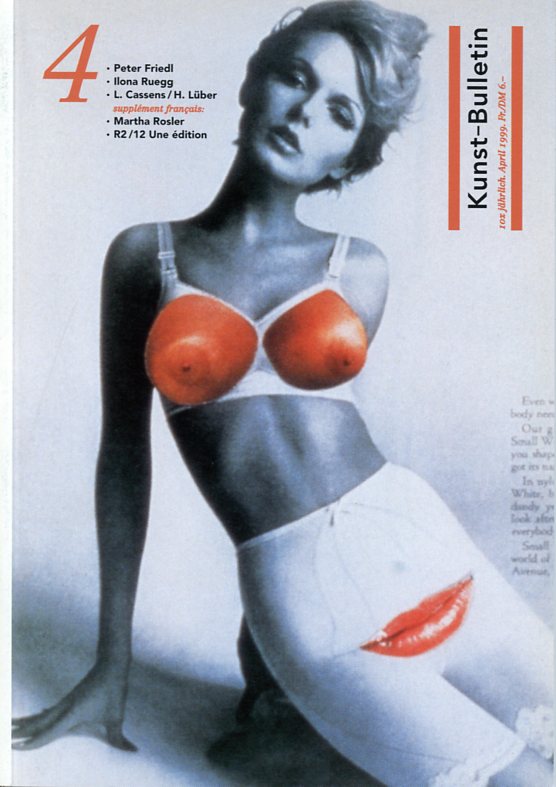
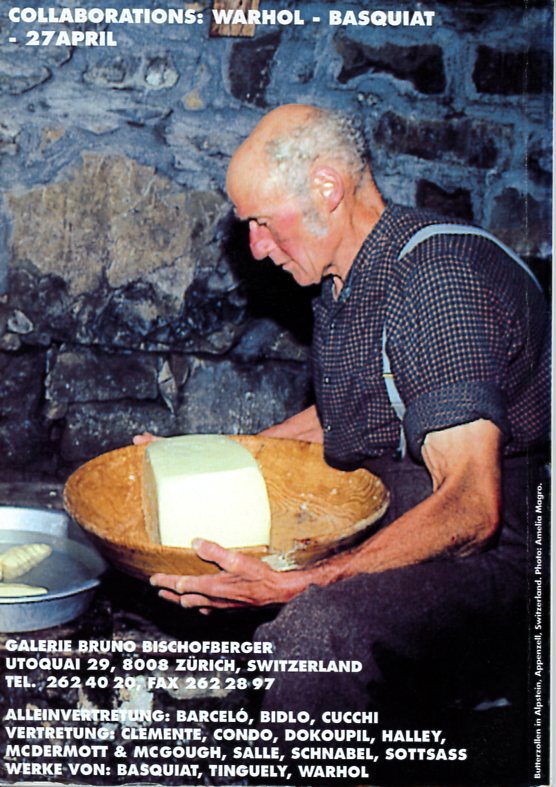
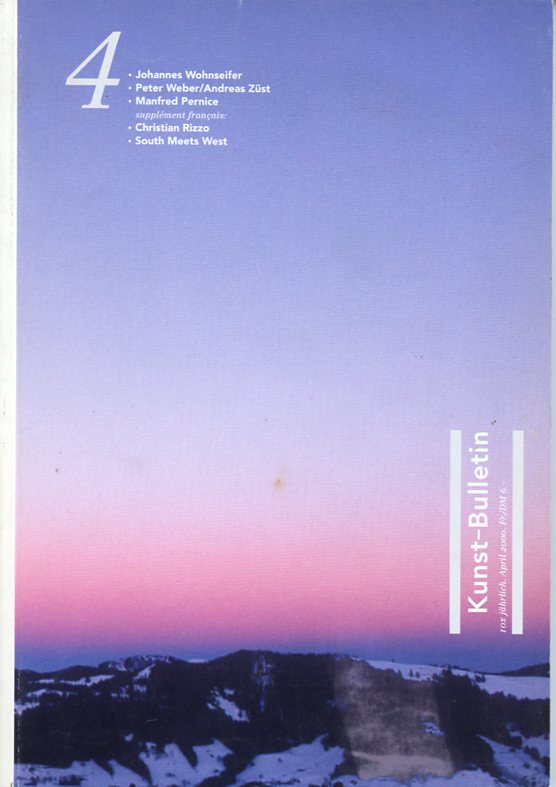
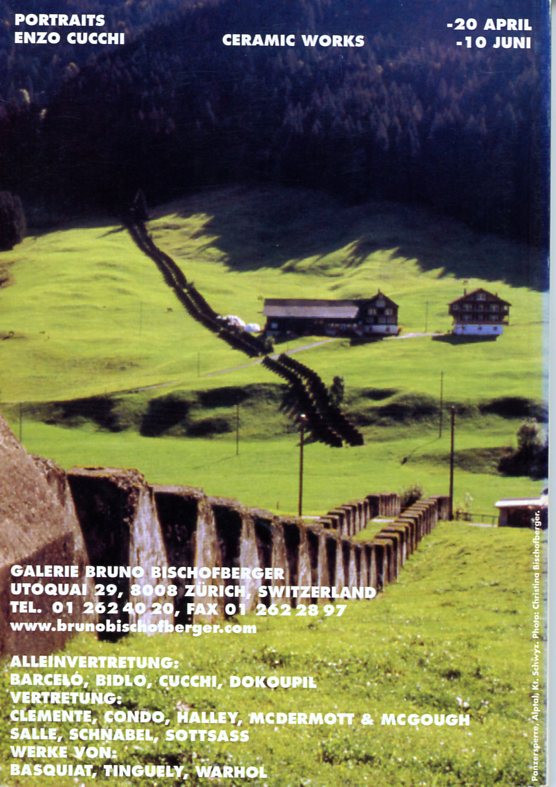
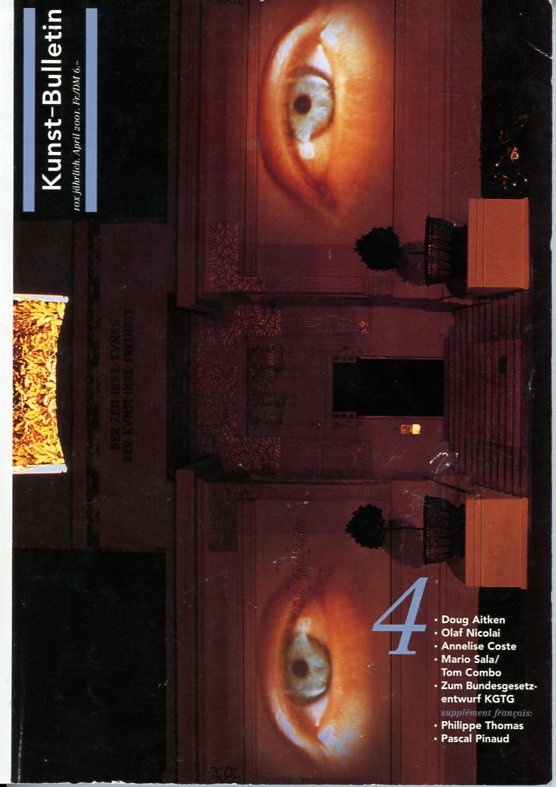
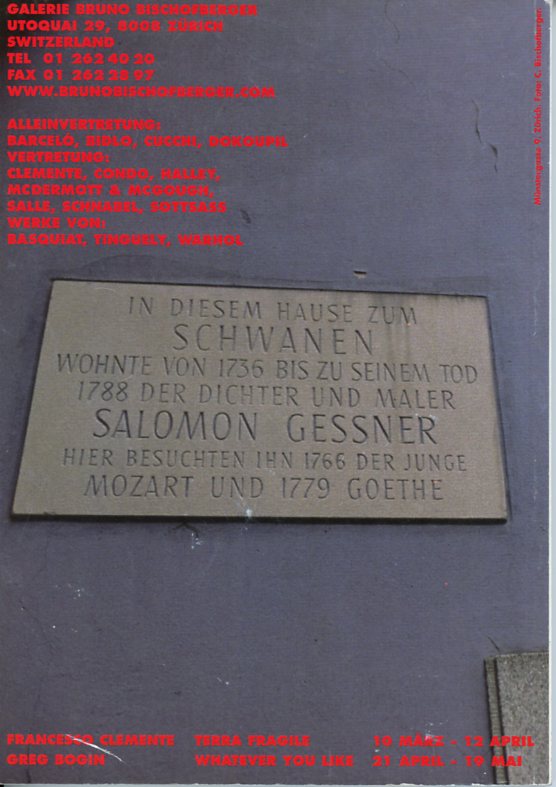
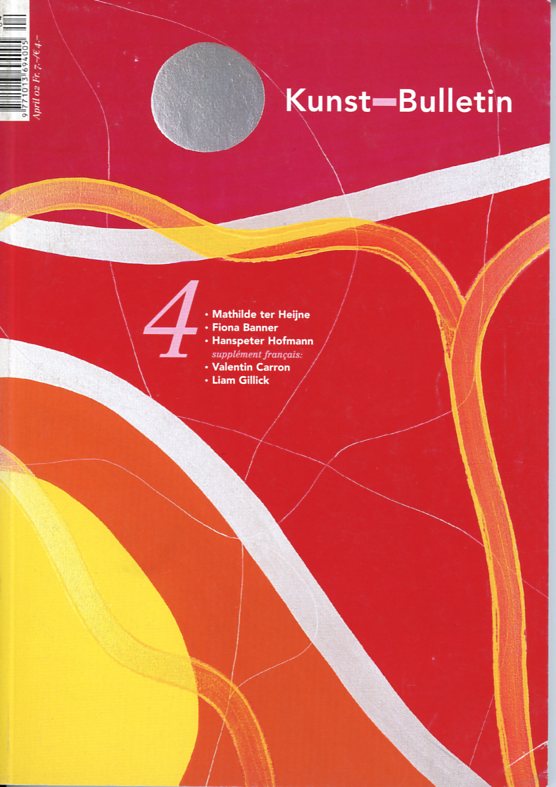
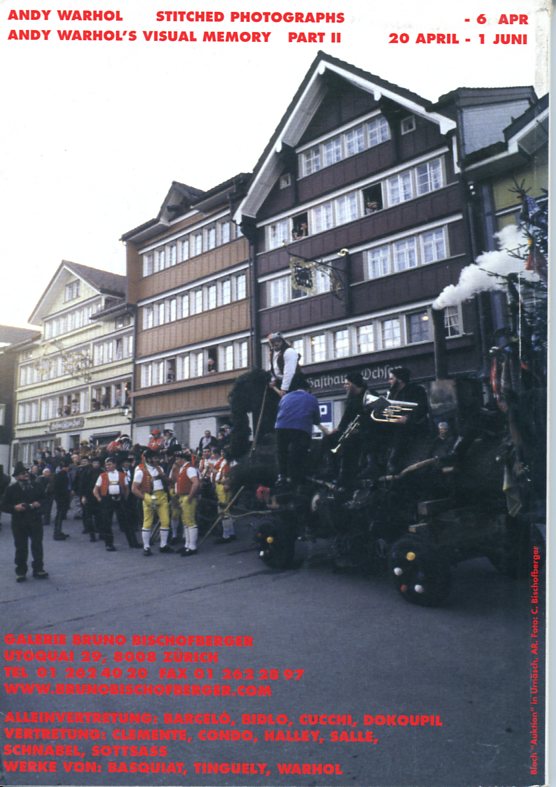
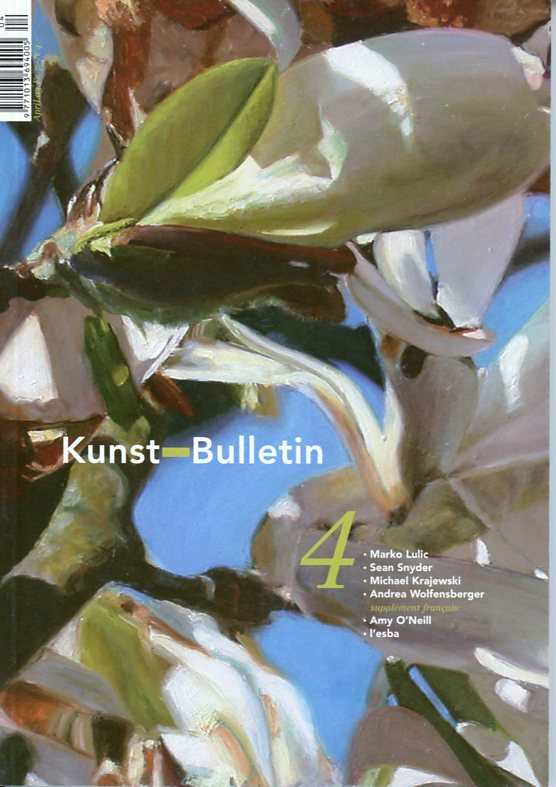
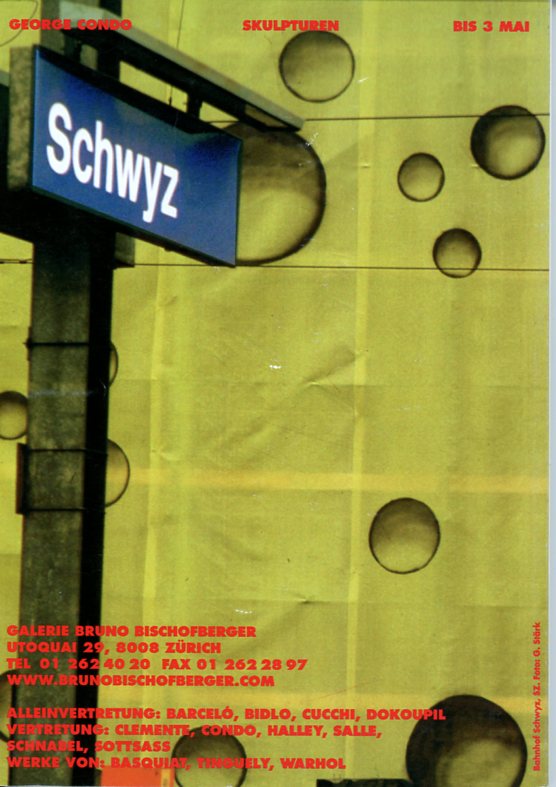
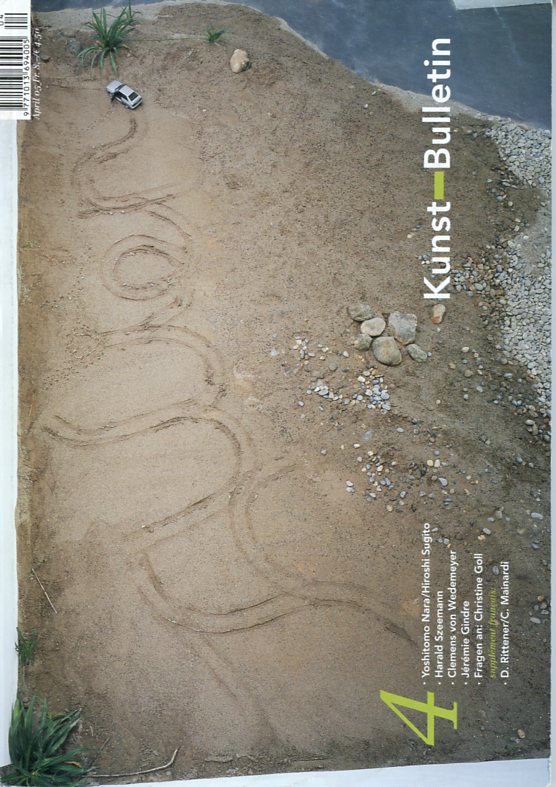
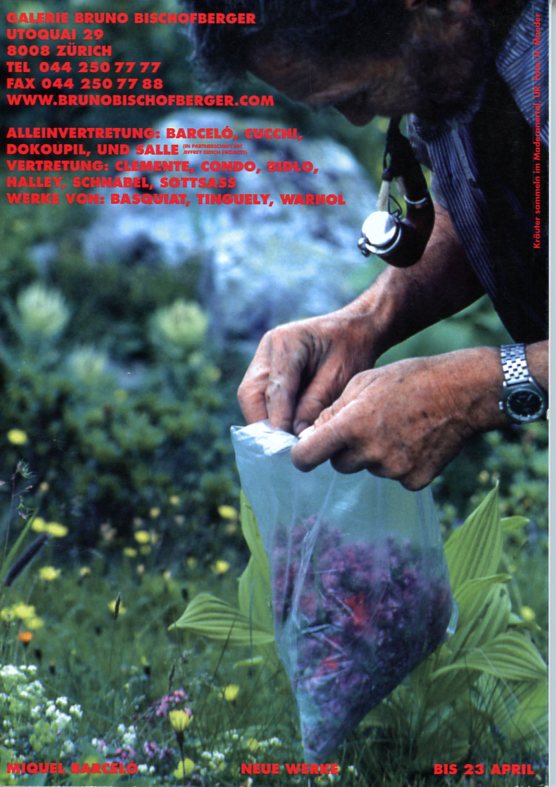
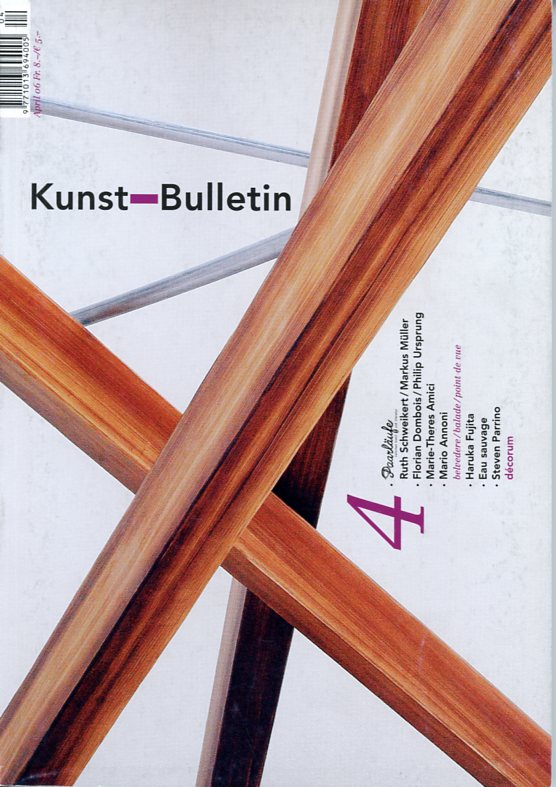
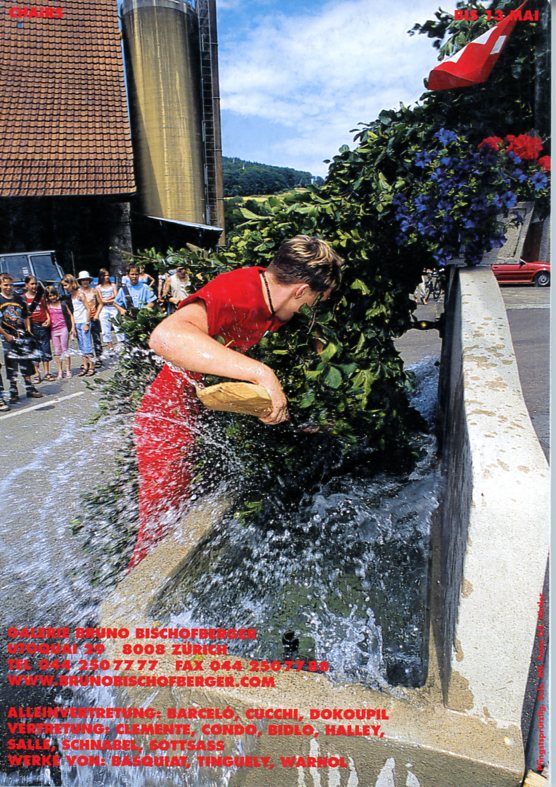
BACK COVERS. SUMMER FALL WINTER SPRING. THE ADVERTISMENTS OF GALERIE BRUNO BISCHOFBERGER IN ARTFORUM AND KUNSTBULLETIN. Since 1987, Galerie Bruno Bischofberger has combined the advertisements for its gallery program with images of traditional Swiss life; a montage of contrasts that brings local traditions face to face with a globalized art world’s cosmopolitan self-image. For roughly thirty years, the advertisement series has appeared parallel in the art magazines Artforum and Kunstbulletin and has helped the gallery achieve a high level of recognizability. Curated by Peter Fischli and Hilar Stadler at Bellpark Kriens in 2018.
Comment by user Thomas Schlup: “Ländliches Brauchtum, verwurzelt in Volk und Scholle. Keine billige Touristenfolklore. Die Zinggen in der Landschaft heissen im Volksmund ‘Toblerone’. Sie dienten einst als Panzersperren. Die Titelseiten sind ein Spiegel der Zeit, die in Dialog treten mit den Fotos, mit denen Bruno Bischofberger auf seine Galerie hinweist. Das ‘Kunstbulletin’ begleitet uns auch heute noch verlässlich.”
Don Brown
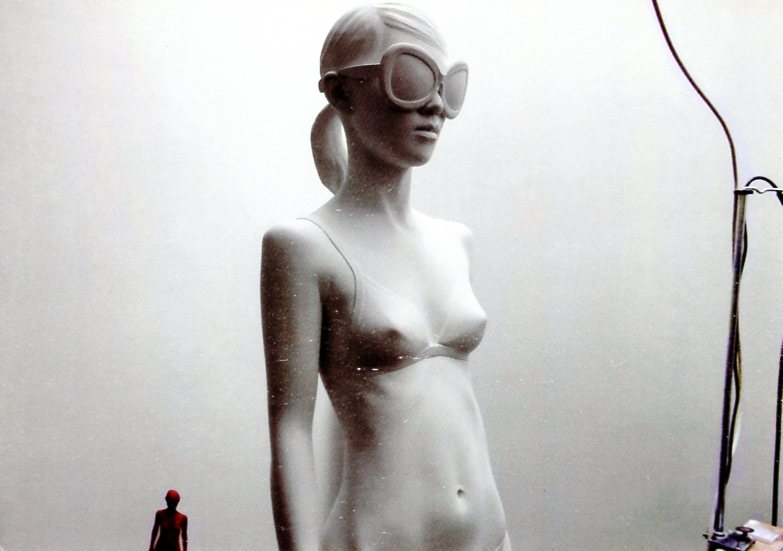
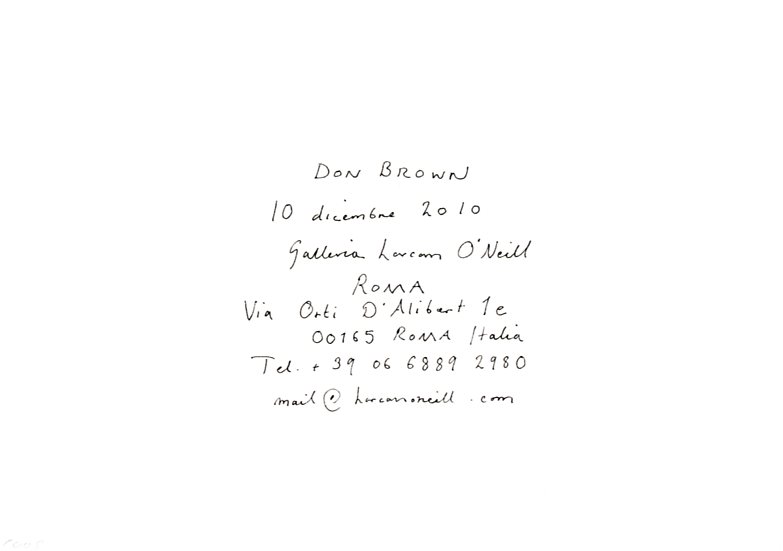
Don Brown is a sculptor best known for his dedication to varied depictions of his wife, Yoko. Since 1999, Brown has been producing three-quarter or half-scale portraits of Yoko using a classical tradition of representational sculpture, but without heroism or idealization. The figure, almost always with downcast or closed eyes, appears in various states of dress—sometimes obscured
Villa Magica and friends: Season’s Greetings
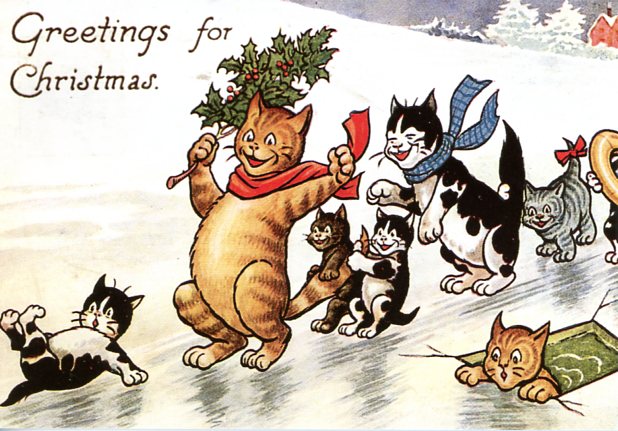
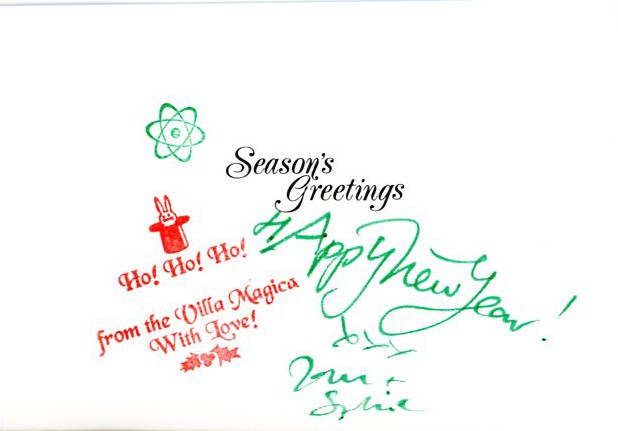
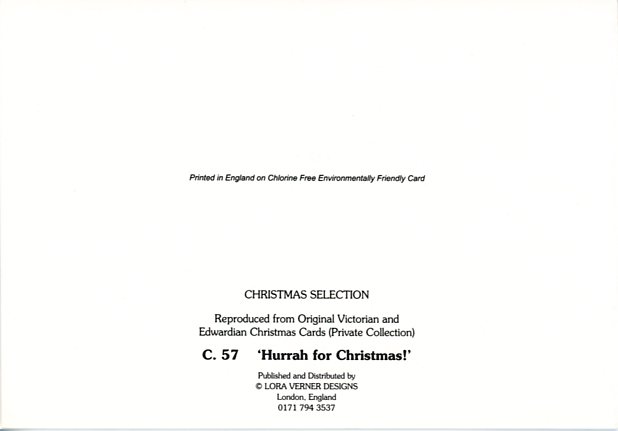
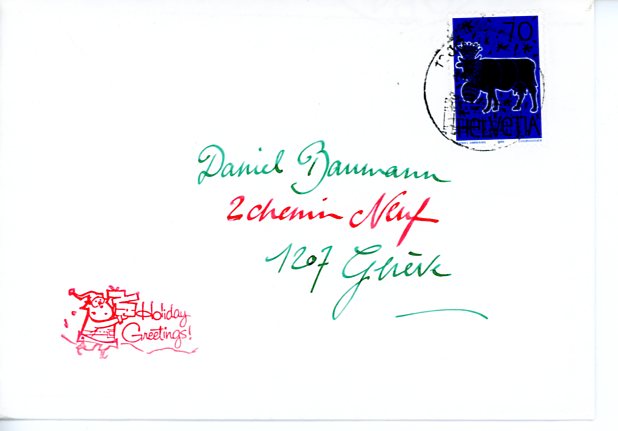
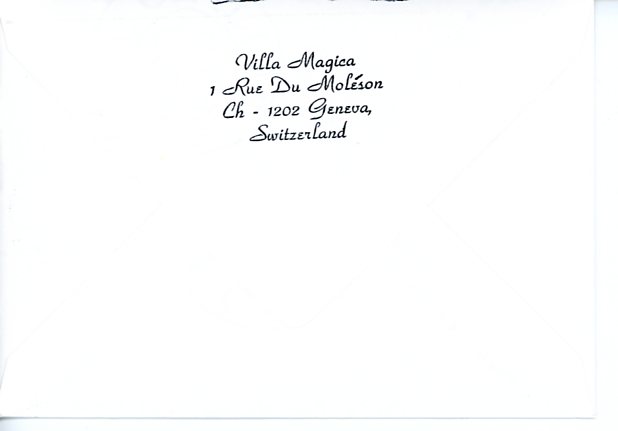
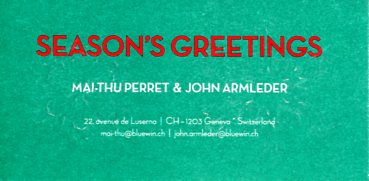
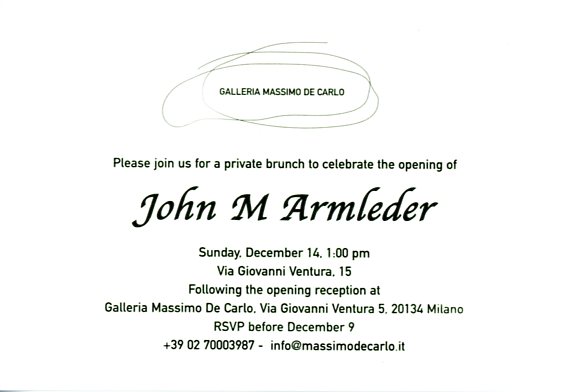
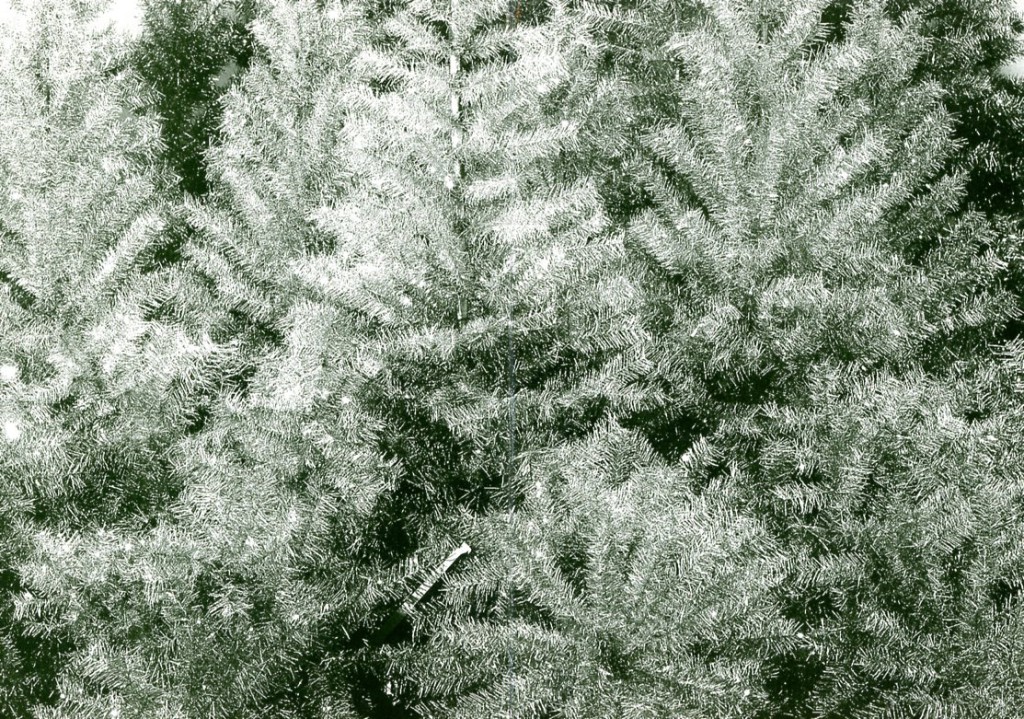
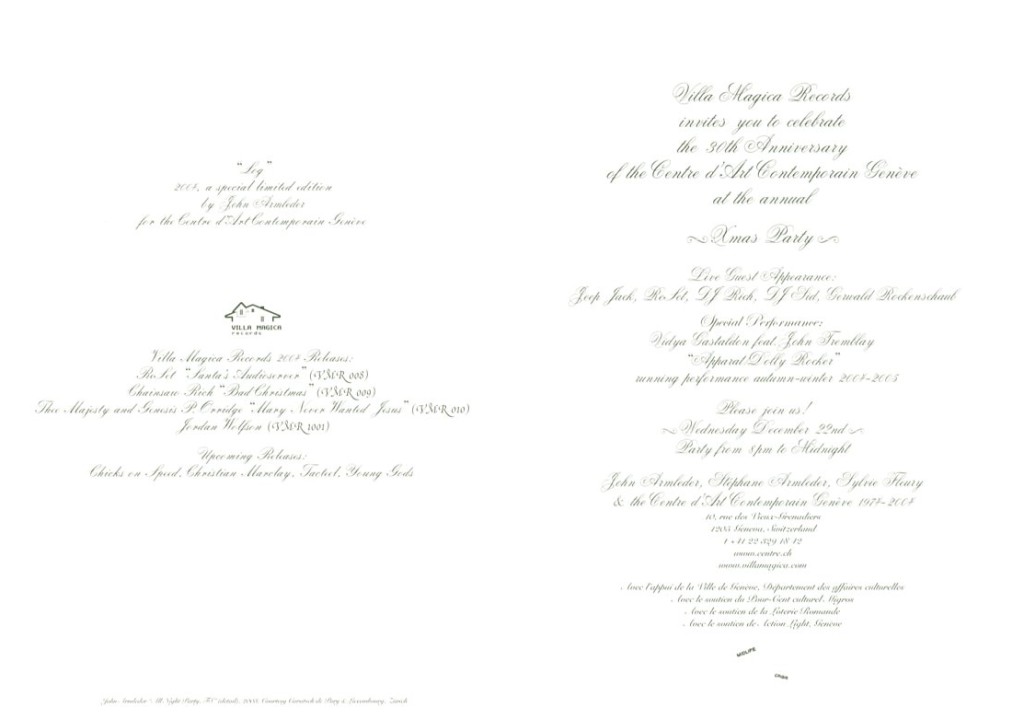
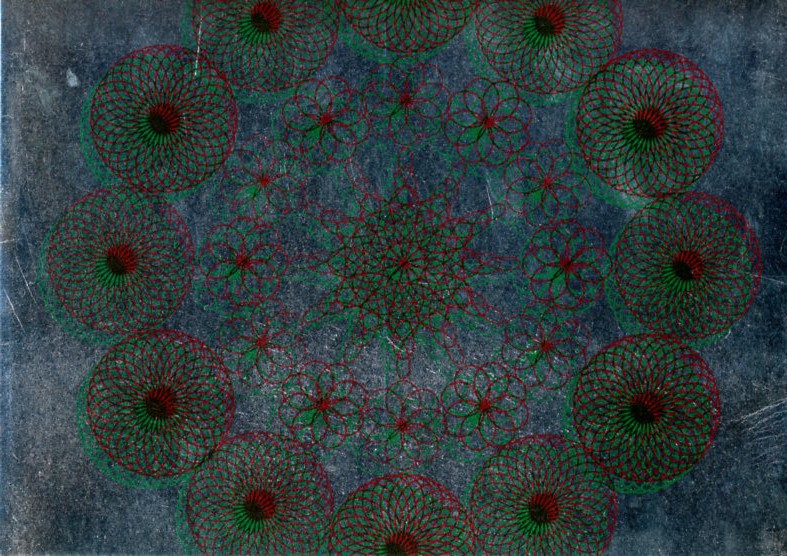
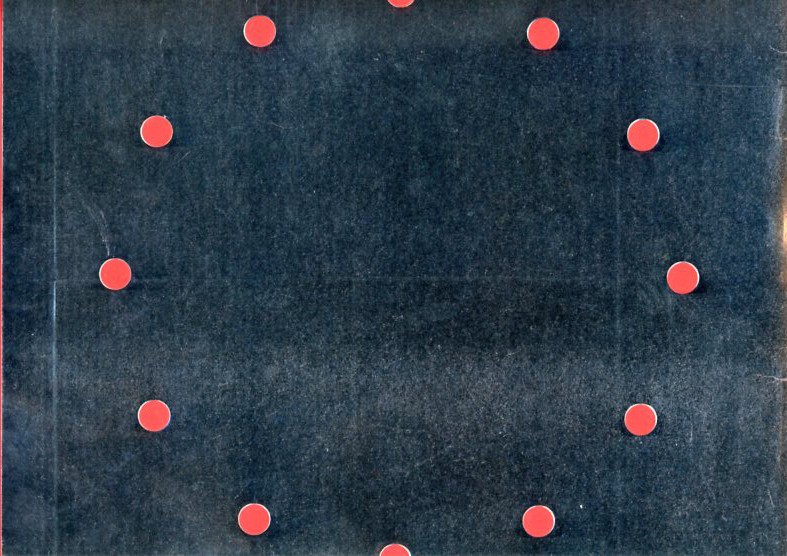
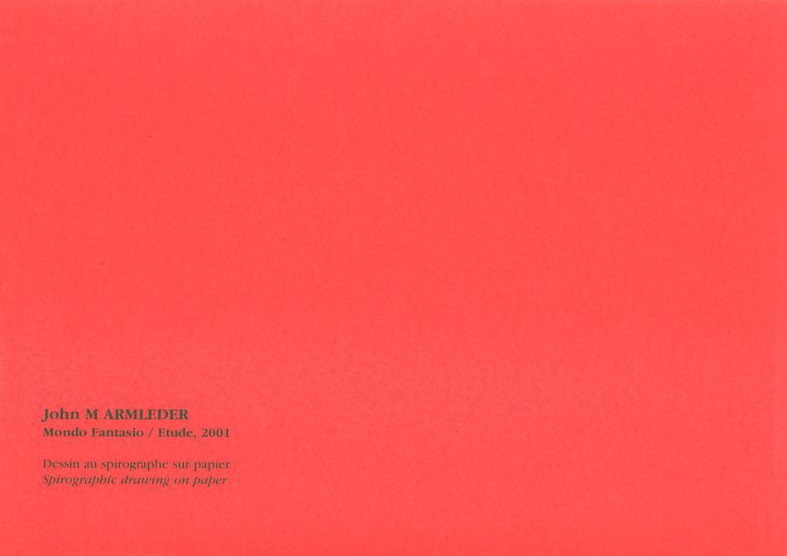
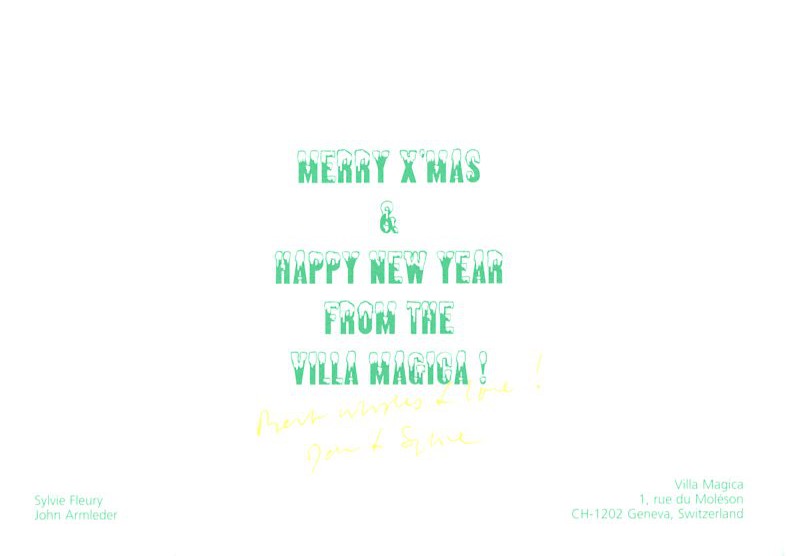
Annual Season’s Greetings by Villa Magica, the Geneva-based label founded by Sylvie Fleury, John Armleder, and Stephan Armleder (aka The Genevan Heathen). Here and here some of the label’s music, LPs, and CDs. They also have or had a tumblr page.
Comment by User Thomas Schlup: “Leicht antropomorphe Katzen mit einem Mistelzweig auf einer vergnügten Rutschpartie wie es sie nur in England geben kann. Die Karte ist ein Nachdruck aus einer privaten Sammlung, und nun ist sie wieder gesammelt worden. Eine ganze Sammlung an Schriften – gesetzt, gedruckt, gestempelt, geschrieben. Die kleine Grüne Karte hat zwei eingeprägte Schneesterne. Die Lamettabäume funkeln prächtig.”
Tim Rollins and K.O.S.
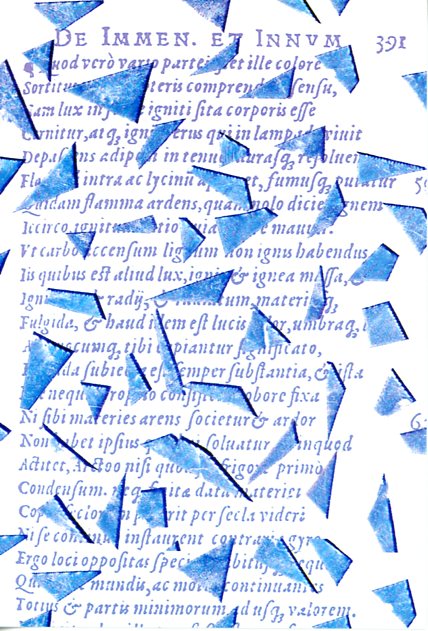
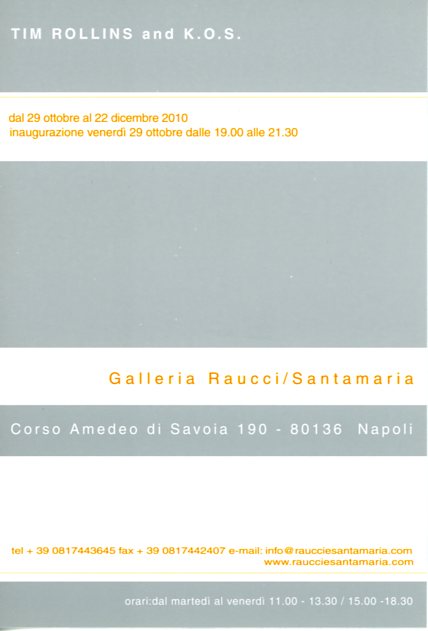
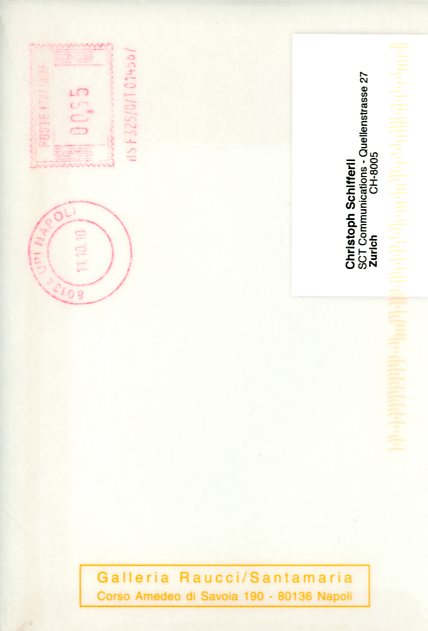
“What began in the 1980s as a program for South Bronx teenagers with learning disabilities grew quickly into a successful art collective called Tim Rollins and K.O.S. (Kids of Survival), whose works are in the collections of major museums. Now it’s composed of four middle-aged men: the brothers Angel Abreu and Jorge Abreu, Rick Savinon and Robert Branch.” Ted Loss in January 2021 in “The Kids of Survival Are Middle-Aged — and Transforming Yet Again” in The New York Times article.
This invitation card comes from the Neapolitan Galleria Raucci/Santamaria (est. 1992) for their show in 2010, here some images. Tim Rollins died in 2017.
Comment by user Thomas Schlup: “Tim Rollins und seine Kids of Survival nehmen alte Drucke und befördern sie in die Gegenwart. Aus der South Bronx an den Fuss des Vesuv. Die Schrift: möglicherweise ‘Aldus’. Die erste Kursive Druckschrift. Aus der Zeit, als die ‘Bembo’ geschnitten wurde, heute noch eine der lesbarsten Schriften überhaupt. Aldus (Manutius) war der Namensgeber für die Firma mit dem ‘PageMaker’, als das Arbeiten am Computer noch Desktop Publishing hiess. Essentiell: das hauchzart durchscheinende Couvert.”
Jochen Lempert
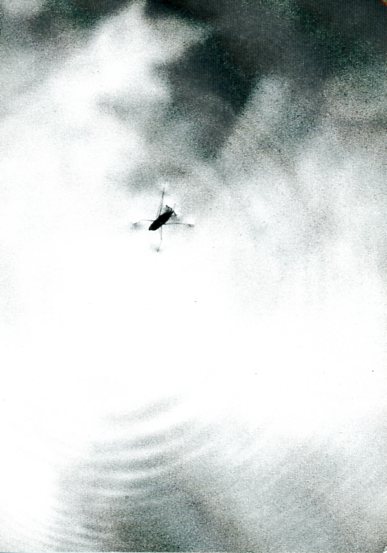
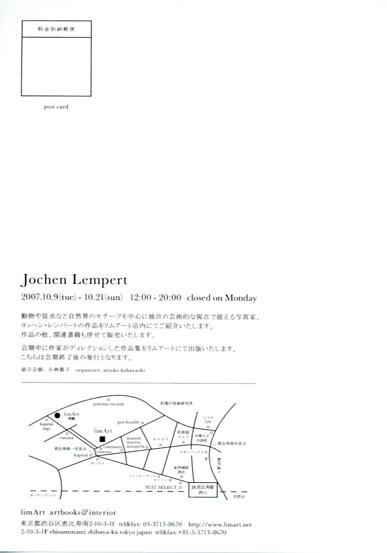
Jochen Lempert ist mir vor zwei Jahren in Paris begegnet. Ich mag seinen Blick auf die scheinbaren Nebenschauplätze. Diese Fotografie ist irritierend und zauberhaft: Das kleine Gewicht auf der Wasseroberfläche; die Spannung, die es trägt. Faszinierend: der weite Raum, der sich im Wasser spiegelt. Das unscheinbar Kleine im unendlich grossen Raum.
Raymond Roussel @ Buchholz
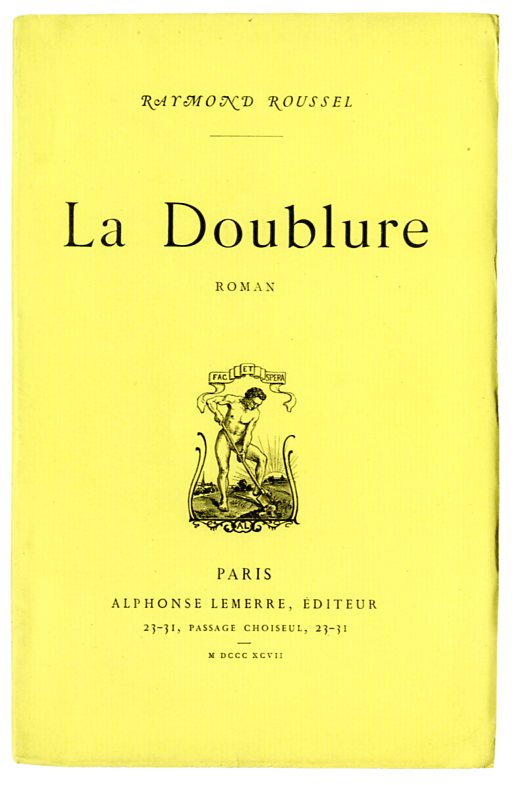
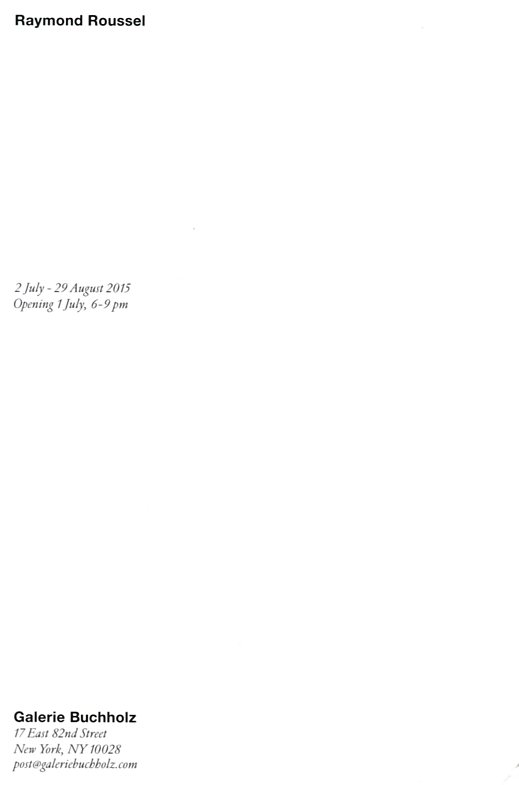
Galerie Buchholz shows more than a few brilliant artists. Sometimes, the gallery organizes shows that we would love to organize too — and we love Daniel and Christopher for doing so. In this case about famed French author Raymond Roussel who wrote New Impressions of Africa and Locus Solus. Check Buchholz’ shows on RR here and here. Roussel died in 1933 in a hotel in Palermo, the beloved Italian author Leonardo Sciascia wrote about it.
“Docilement une brillante fanfare éclata, sortant d’une foule de pavillons d’inégale grosseur tassés en groupe compact.” Raymond Roussel
Robert Kinmont
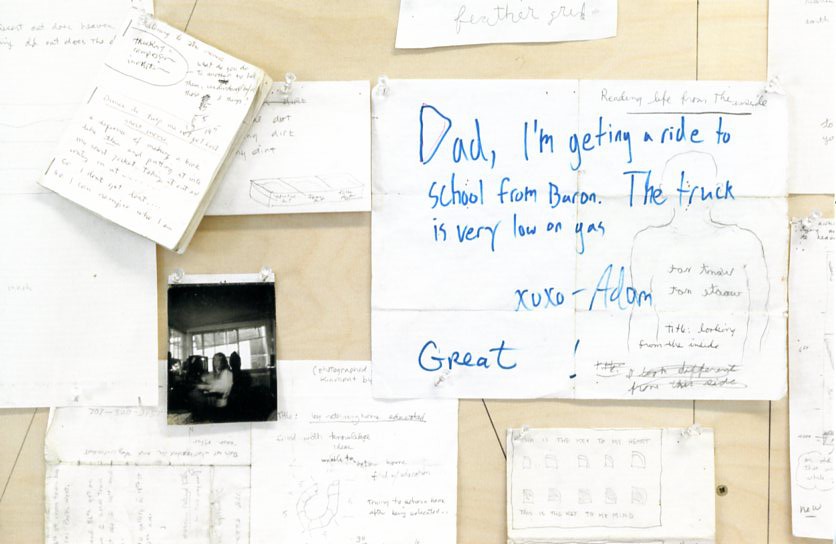
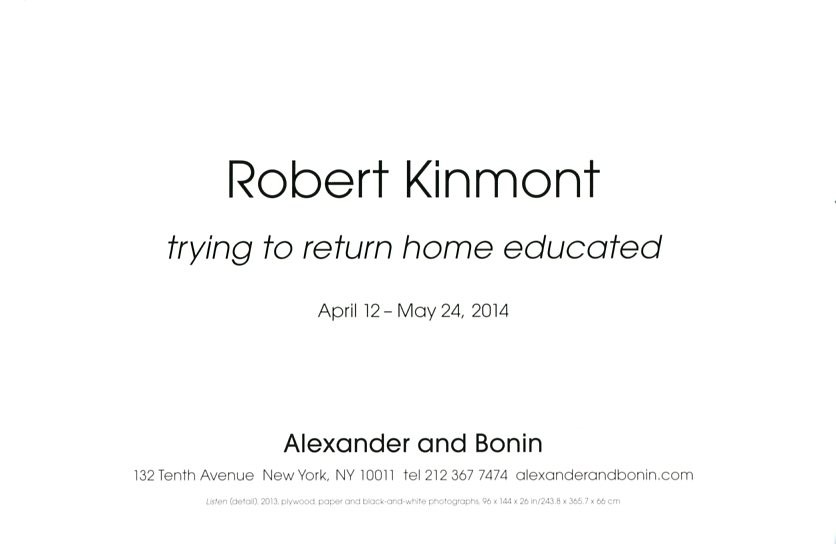
Robert Kinmont (b. 1937, Los Angeles) currently lives in Northern California. Between 1968 and 1981, he exhibited in galleries and institutions such as the San Francisco Museum of Art; the de Young Museum, San Francisco; the Smithsonian Institution, Washington D.C. and the 1968 “Sculpture Annual” at the Whitney Museum, New York. Between 1975 and 2004, Kinmont studied Buddhism and worked as a carpenter, returning to his artistic practice in 2005.
Exhibition announcement for this show at Alexander and Bonin.
Martin Honert
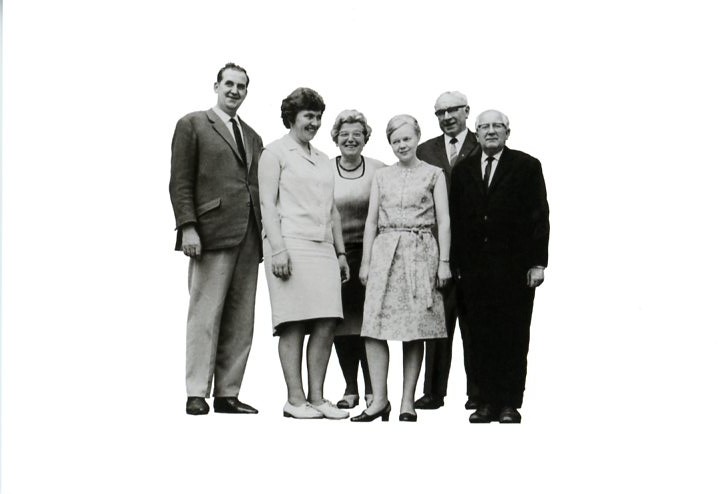
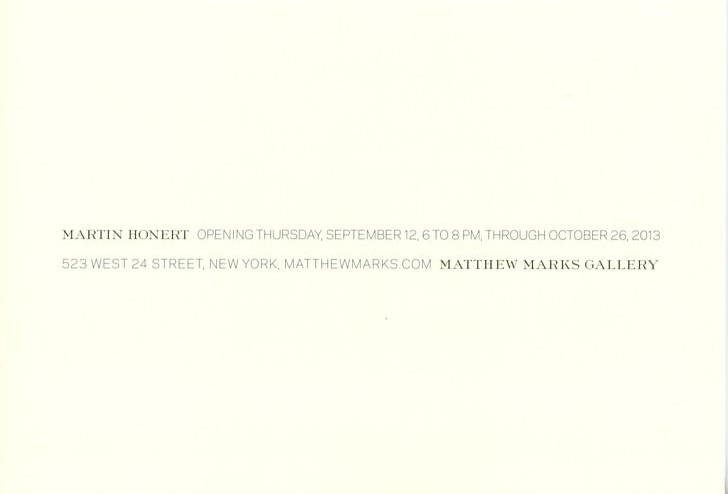
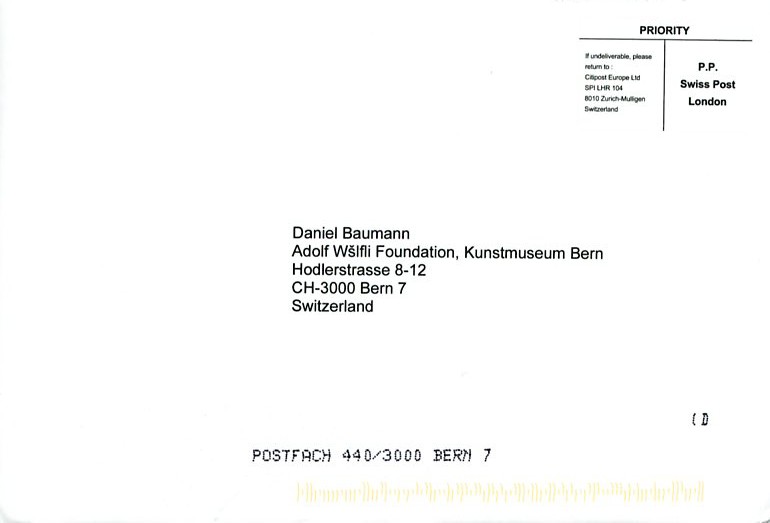
Martin Honert is a German artists born in 1953. He shows at the American gallery Matthew Marks. The gallery sends out some of the best invitation cards, and they certainly deserve a retrospective.
 follow
follow